- Our Mission
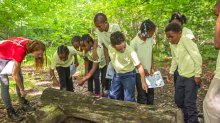

Yes, Field Trips Are Worth the Effort
Culturally enriching trips can boost grades and decrease absences and behavioral infractions, new research reveals.
As a teacher, Elena Aguilar often looked for opportunities to get her students out of the classroom and into different neighborhoods or natural environments. “We did the usual museum trips and science center stuff, but I loved the trips which pushed them into unfamiliar territory,” writes Aguilar , an instructional coach and author. Nudging kids out of their comfort zones, she says, “taught them about others as well as themselves. It helped them see the expansiveness of our world and perhaps inspired them to think about what might be available to them out there.”
Aguilar’s thinking made an impact: 15 years after traveling with her third-grade class to Yosemite National Park, a student contacted Aguilar on Facebook to thank her for the life-changing excursion. “You changed our lives with that trip,” the student wrote. “It's what made me want to be a teacher, to be able to give that same gift to other kids.”
As schools grapple with pandemic-related concerns about balancing in-seat instructional time with non-essentials like trips, new research published in The Journal of Human Resources argues that field trips, and the vital educational experiences that they provide—whether it’s a visit to a local museum or a big commitment like Aguilar’s national park trip—deliver a host of positive social and academic outcomes and are worth the effort.
“The pandemic should not keep schools from providing these essential cultural experiences forever,” asserts Jay P. Greene , one of the study’s co-authors and a senior research fellow at the Heritage Foundation, in an opinion piece for the Daily News . “If schools make culturally-enriching field trips an integral part of the education experience, all students—especially those whose parents have a harder time accessing these experiences on their own—would benefit.”
In the study, researchers assigned more than 1,000 fourth- and fifth-grade students in Atlanta to two groups. One group participated in three to six “culturally-enriching” field trips—visits to an art museum, a live theater performance, and a symphony concert—while students in the control group stayed put in class. The outcome? Kids in the field trip group “scored higher on end-of-grade exams, received higher course grades, were absent less often, and had fewer behavioral infractions,” compared to students in the control group, according to a ScienceDaily brief . Benefits lasted two to three years, Greene writes, and were “most visible when students were in middle school.”
“We are able to demonstrate that a relatively simple intervention—and we consider it pretty low-touch; three field trips in a year, maybe six field trips in two years—can actually have some substantial impacts,” says lead study author Heidi Holmes Erickson in an interview with The 74 . “They’re not just limited to social benefits. It shows that smaller interventions can actually have some significant effects on academics as well.”
Field trips aren’t a threat to in-class instruction, Erickson notes, they’re a tool to help bolster engagement and expand students’ horizons. “It's possible to expose students to a broader world and have a culturally enriching curriculum without sacrificing academic outcomes, and it may actually improve academic outcomes,” Erickson says. Far from harming test scores, the researchers found that culturally rich excursions reinforce academics and “students who participated in these field trips were doing better in class.”
Meanwhile, class trips don't need to be elaborate productions to make an impact: small excursions outside the classroom—"low-touch," as the researchers call them—can pack a punch. Here’s how three educators recommend dialing it back with low-stakes options that are both engaging and stimulating for students, but might not require days to prepare and plan:
Make Them Bite-Sized : Instead of allocating an entire day to a field trip, educational consultant Laurel Schwartz takes her classes on micro field trips , or “short outings that can be completed in a single class period.” These real-world encounters, she says, are especially beneficial for English learners and world language students. A micro field trip to a nearby park or around school grounds, for example, can be a great opportunity to “enhance a unit on nature and wildlife while reinforcing vocabulary for senses, colors, and the concepts of quantity and size,” Schwartz writes. “Afterwards, students might write descriptive stories set in the place you visited using vocabulary collected and defined together by the class.”
Try Teacher-Less Trips : To encourage exploration and learning outside of the classroom, former social studies teacher Arch Grieve removes himself from the equation with teacher-less field trips rooted in students’ local communities. Grieve only suggests options that are directly tied to a unit being discussed in class—like attending a talk at a local university or visiting a museum or cultural festival—and offers extra credit to incentivize students. “These trips allow for a greater appreciation of my subject matter than is possible in the school setting, and perhaps best of all, there's little to no planning involved.”
Explore Virtual Options : It may not be as fun as visiting in person, but the Internet makes it possible to visit museums like The National Gallery of London and The Vatican Museums without leaving the school building. Middle school English teacher Laura Bradley likes to search the Museums for Digital Learning website by topic, keyword, and grade level, to find lessons and activities that meet her unique curricular needs. The site grants access to digitized museum collections, 3D models, audio files, documents, images, and videos.
The 10 Benefits of School Field Trips: Why it’s Crucial to Learn Outside the Classroom

Everyone (read: students) knows the best part about school is the field trips. Students get to get out of the classroom and into the real world, even if just for a few hours. These trips, no matter where they are, are formative for children . Whether it’s learning how to shuck corn on the grounds of a historical park, studying the tribal gear in an African art exhibit, or understanding how gravity works at the science museum , these hands-on learning experiences give children the ability to do things that can’t always fit inside the four walls of a classroom .
In this article, we’re going to share with you the 10 benefits of school field trips and why it’s crucial for children to learn outside the classroom.
The 10 Benefits of School Field Trips
Students do better in school.
Leaving school actually makes students do better when they get back to school. We’re not talking about suspensions or weekends or holidays or vacations. We’re talking about field trips .
Regardless of gender, ethnicity or socioeconomic status, students who go on field trips have better grades, higher graduation rates from high school and college, and greater income [1]. In fact, in a study conducted by the NEA, 89% of adults said educational trips had a positive, lasting impact on their education and career because the trips made them more engaged, intellectually curious and interested in and out of school.
Students learn more social skills
By getting out of the classroom and into a new place that encourages learning in a different aspect, students have the opportunity to do more than learn. They have the chance to talk to new people. These social skills they acquire help them learn things that they can’t in textbooks or in workbooks.
Students can visit new places
Not everyone has the financial means to visit museums and art galleries and historical landmarks. So these field trips give children the opportunities to see places they may not regularly visit.
Field trips exist not just to provide economically useful skills in numeracy and literacy, but also to introduce people to arts and culture. More-advantaged families may take their children to these cultural institutions outside of school hours, but less-advantaged students are less likely to have these experiences if these trips do not provide them.
With field trips, public schools viewed themselves as the great equalizer in terms of access to our cultural heritage [2].
Students can become critical thinkers
Field trips are more than going to a new place and getting out of school for the day. Everywhere you go can turn into a learning experience.
Students who go on field trips are known to have become more observant, noticing and describing more details in image or exhibit [3]. Being observant and paying attention to detail is an important and highly useful skill that students learn when they study and discuss what they see on field trips.
Students learn by experiencing, not just by studying “theory”
When students leave the classroom, they see the connections between what is happening at school and in the “real world.” They begin to see that what they learn within the walls of the classroom can help them solve the problems they see in the world around them, and can have a direct impact on who they become as adults [3].
Students learn more time management skills
A lot goes into a field trip, and while teachers, chaperones, and workers are the ones in charge, it’s also up to students to figure out what exhibits they want to learn about, how much time they need to eat, and when they can manage to visit the gift shop at the end of the trip.
Field trips give students perhaps their first feel of independence, even if dozens of adults are watching over them.
Students get to learn by doing
Think of the science museums and historical parks around your area. The classes they offer and the exhibits they show. The things students can learn that they wouldn’t otherwise get to inside a classroom. That’s because not all students can get the full education they need when they learn from textbooks and reading and application.
Each person has a different way of accumulating knowledge. While some prefer listening to learn better, others need to write or they only need to read the text or see a picture to later remember. The learning styles can be classified in visual, auditory and kinesthetic [3]. The distribution of the three learning styles is 65% visual, 30% auditory and 5% kinesthetic.
Field trips give these more unique learners a chance to, well, learn.
Students learn more teamwork skills
While on field trips, students typically get the chance to work together to solve simulated problems associated with the place of the field trip. Differing from group projects in school, these “real world” simulations allow children to put their teamwork skills and critical thinking skills to good use.
Students develop a stronger connection to the community
Communities are often rooted in a rich sense of history. By getting out of the classroom and into the streets, students can learn that there’s more out there than their little insular bubbles. School can bog students down, so it’s important to remind them how much is out there, even in our own community.
Students learn more leadership skills
Learning about people and places on field trips give students a chance to step out of their comfort zone. It gives children the chance to step up when they’re out in public. A leadership opportunity as simple as making a child the student leader in a group gives students the chance to test themselves and build relationships with those around them.
Buying Guide
Remember the trip you went on by bringing a Polaroid camera from Unique Photo .
This camera will need immediately printable film from Retrospekt .
If you have a cell phone and it’s allowed on the field trip, don’t let it die while you’re out. Purchase the ZAGG portable charger case. And don’t forget to charge the case before the trip.
No matter where you go on a field trip, chances are you’ll be taking a drive to get there. Stay hydrated with a vibey crystal water bottle from Vorda .
Pack all of your belongings in a Fjallraven backpack.
External references

- The Journal
- Vol. 14, No. 1
The Educational Value of Field Trips
Jay P. Greene
Brian Kisida
Daniel H. Bowen
Jay P. Greene joined EdNext Editor-in-chief Marty West to discuss the benefits of field trips, including how seeing live theater is a more enriching experience to students, on the EdNext podcast .

Crystal Bridges; Crystal Bridges Museum of American Art; School Tour © 2013 Stephen Ironside/Ironside Photography Bo Bartlett – “The Box” – 2002 • Oil on Linen • 82 x 100 – Photographer is Karen Mauch
The school field trip has a long history in American public education. For decades, students have piled into yellow buses to visit a variety of cultural institutions, including art, natural history, and science museums, as well as theaters, zoos, and historical sites. Schools gladly endured the expense and disruption of providing field trips because they saw these experiences as central to their educational mission: schools exist not only to provide economically useful skills in numeracy and literacy, but also to produce civilized young men and women who would appreciate the arts and culture. More-advantaged families may take their children to these cultural institutions outside of school hours, but less-advantaged students are less likely to have these experiences if schools do not provide them. With field trips, public schools viewed themselves as the great equalizer in terms of access to our cultural heritage.
Today, culturally enriching field trips are in decline. Museums across the country report a steep drop in school tours. For example, the Field Museum in Chicago at one time welcomed more than 300,000 students every year. Recently the number is below 200,000. Between 2002 and 2007, Cincinnati arts organizations saw a 30 percent decrease in student attendance. A survey by the American Association of School Administrators found that more than half of schools eliminated planned field trips in 2010–11.
The decision to reduce culturally enriching field trips reflects a variety of factors. Financial pressures force schools to make difficult decisions about how to allocate scarce resources, and field trips are increasingly seen as an unnecessary frill. Greater focus on raising student performance on math and reading standardized tests may also lead schools to cut field trips. Some schools believe that student time would be better spent in the classroom preparing for the exams. When schools do organize field trips, they are increasingly choosing to take students on trips to reward them for working hard to improve their test scores rather than to provide cultural enrichment. Schools take students to amusement parks, sporting events, and movie theaters instead of to museums and historical sites. This shift from “enrichment” to “reward” field trips is reflected in a generational change among teachers about the purposes of these outings. In a 2012‒13 survey we conducted of nearly 500 Arkansas teachers, those who had been teaching for at least 15 years were significantly more likely to believe that the primary purpose of a field trip is to provide a learning opportunity, while more junior teachers were more likely to see the primary purpose as “enjoyment.”
If schools are de-emphasizing culturally enriching field trips, has anything been lost as a result? Surprisingly, we have relatively little rigorous evidence about how field trips affect students. The research presented here is the first large-scale randomized-control trial designed to measure what students learn from school tours of an art museum.
We find that students learn quite a lot. In particular, enriching field trips contribute to the development of students into civilized young men and women who possess more knowledge about art, have stronger critical-thinking skills, exhibit increased historical empathy, display higher levels of tolerance, and have a greater taste for consuming art and culture.
Design of the Study and School Tours
The 2011 opening of the Crystal Bridges Museum of American Art in Northwest Arkansas created the opportunity for this study. Crystal Bridges is the first major art museum to be built in the United States in the last four decades, with more than 50,000 square feet of gallery space and an endowment in excess of $800 million. Portions of the museum’s endowment are devoted to covering all of the expenses associated with school tours. Crystal Bridges reimburses schools for the cost of buses, provides free admission and lunch, and even pays for the cost of substitute teachers to cover for teachers who accompany students on the tour.
Because the tour is completely free to schools, and because Crystal Bridges was built in an area that never previously had an art museum, there was high demand for school tours. Not all school groups could be accommodated right away. So our research team worked with the staff at Crystal Bridges to assign spots for school tours by lottery. During the first two semesters of the school tour program, the museum received 525 applications from school groups representing 38,347 students in kindergarten through grade 12. We created matched pairs among the applicant groups based on similarity in grade level and other demographic factors. An ideal and common matched pair would be adjacent grades in the same school. We then randomly ordered the matched pairs to determine scheduling prioritization. Within each pair, we randomly assigned which applicant would be in the treatment group and receive a tour that semester and which would be in the control group and have its tour deferred.
We administered surveys to 10,912 students and 489 teachers at 123 different schools three weeks, on average, after the treatment group received its tour. The student surveys included multiple items assessing knowledge about art as well as measures of critical thinking, historical empathy, tolerance, and sustained interest in visiting art museums. Some groups were surveyed as late as eight weeks after the tour, but it was not possible to collect data after longer periods because each control group was guaranteed a tour during the following semester as a reward for its cooperation. There is no indication that the results reported below faded for groups surveyed after longer periods.
We also assessed students’ critical-thinking skills by asking them to write a short essay in response to a painting that they had not previously seen. Finally, we collected a behavioral measure of interest in art consumption by providing all students with a coded coupon good for free family admission to a special exhibit at the museum to see whether the field trip increased the likelihood of students making future visits.
All results reported below are derived from regression models that control for student grade level and gender and make comparisons within each matched pair, while taking into account the fact that students in the matched pair of applicant groups are likely to be similar in ways that we are unable to observe. Standard validity tests confirmed that the survey items employed to generate the various scales used as outcomes measured the same underlying constructs.
The intervention we studied is a modest one. Students received a one-hour tour of the museum in which they typically viewed and discussed five paintings. Some students were free to roam the museum following their formal tour, but the entire experience usually involved less than half a day. Instructional materials were sent to teachers who went on a tour, but our survey of teachers suggests that these materials received relatively little attention, on average no more than an hour of total class time. The discussion of each painting during the tour was largely student-directed, with the museum educators facilitating the discourse and providing commentary beyond the names of the work and the artist and a brief description only when students requested it. This format is now the norm in school tours of art museums. The aversion to having museum educators provide information about works of art is motivated in part by progressive education theories and by a conviction among many in museum education that students retain very little factual information from their tours.
Recalling Tour Details. Our research suggests that students actually retain a great deal of factual information from their tours. Students who received a tour of the museum were able to recall details about the paintings they had seen at very high rates. For example, 88 percent of the students who saw the Eastman Johnson painting At the Camp—Spinning Yarns and Whittling knew when surveyed weeks later that the painting depicts abolitionists making maple syrup to undermine the sugar industry, which relied on slave labor. Similarly, 82 percent of those who saw Norman Rockwell’s Rosie the Riveter could recall that the painting emphasizes the importance of women entering the workforce during World War II. Among students who saw Thomas Hart Benton’s Ploughing It Under , 79 percent recollected that it is a depiction of a farmer destroying his crops as part of a Depression-era price support program. And 70 percent of the students who saw Romare Bearden’s Sacrifice could remember that it is part of the Harlem Renaissance art movement. Since there was no guarantee that these facts would be raised in student-directed discussions, and because students had no particular reason for remembering these details (there was no test or grade associated with the tours), it is impressive that they could recall historical and sociological information at such high rates.
These results suggest that art could be an important tool for effectively conveying traditional academic content, but this analysis cannot prove it. The control-group performance was hardly better than chance in identifying factual information about these paintings, but they never had the opportunity to learn the material. The high rate of recall of factual information by students who toured the museum demonstrates that the tours made an impression. The students could remember important details about what they saw and discussed.
Critical Thinking. Beyond recalling the details of their tour, did a visit to an art museum have a significant effect on students? Our study demonstrates that it did. For example, students randomly assigned to receive a school tour of Crystal Bridges later displayed demonstrably stronger ability to think critically about art than the control group.
During the first semester of the study, we showed all 3rd- through 12th-grade students a painting they had not previously seen, Bo Bartlett’s The Box . We then asked students to write short essays in response to two questions: What do you think is going on in this painting? And, what do you see that makes you think that? These are standard prompts used by museum educators to spark discussion during school tours.
We stripped the essays of all identifying information and had two coders rate the compositions using a seven-item rubric for measuring critical thinking that was developed by researchers at the Isabella Stewart Gardner Museum in Boston. The measure is based on the number of instances that students engaged in the following in their essays: observing, interpreting, evaluating, associating, problem finding, comparing, and flexible thinking. Our measure of critical thinking is the sum of the counts of these seven items. In total, our research team blindly scored 3,811 essays. For 750 of those essays, two researchers scored them independently. The scores they assigned to the same essay were very similar, demonstrating that we were able to measure critical thinking about art with a high degree of inter-coder reliability.
We express the impact of a school tour of Crystal Bridges on critical-thinking skills in terms of standard-deviation effect sizes. Overall, we find that students assigned by lottery to a tour of the museum improve their ability to think critically about art by 9 percent of a standard deviation relative to the control group. The benefit for disadvantaged groups is considerably larger (see Figure 1). Rural students, who live in towns with fewer than 10,000 people, experience an increase in critical-thinking skills of nearly one-third of a standard deviation. Students from high-poverty schools (those where more than 50 percent of students receive free or reduced-price lunches) experience an 18 percent effect-size improvement in critical thinking about art, as do minority students.

A large amount of the gain in critical-thinking skills stems from an increase in the number of observations that students made in their essays. Students who went on a tour became more observant, noticing and describing more details in an image. Being observant and paying attention to detail is an important and highly useful skill that students learn when they study and discuss works of art. Additional research is required to determine if the gains in critical thinking when analyzing a work of art would transfer into improved critical thinking about other, non-art-related subjects.
Historical Empathy. Tours of art museums also affect students’ values. Visiting an art museum exposes students to a diversity of ideas, peoples, places, and time periods. That broadening experience imparts greater appreciation and understanding. We see the effects in significantly higher historical empathy and tolerance measures among students randomly assigned to a school tour of Crystal Bridges.
Historical empathy is the ability to understand and appreciate what life was like for people who lived in a different time and place. This is a central purpose of teaching history, as it provides students with a clearer perspective about their own time and place. To measure historical empathy, we included three statements on the survey with which students could express their level of agreement or disagreement: 1) I have a good understanding of how early Americans thought and felt; 2) I can imagine what life was like for people 100 years ago; and 3) When looking at a painting that shows people, I try to imagine what those people are thinking. We combined these items into a scale measuring historical empathy.
Students who went on a tour of Crystal Bridges experience a 6 percent of a standard deviation increase in historical empathy. Among rural students, the benefit is much larger, a 15 percent of a standard deviation gain. We can illustrate this benefit by focusing on one of the items in the historical empathy scale. When asked to agree or disagree with the statement, “I have a good understanding of how early Americans thought and felt,” 70 percent of the treatment-group students express agreement compared to 66 percent of the control group. Among rural participants, 69 percent of the treatment-group students agree with this statement compared to 62 percent of the control group. The fact that Crystal Bridges features art from different periods in American history may have helped produce these gains in historical empathy.
Tolerance. To measure tolerance we included four statements on the survey to which students could express their level of agreement or disagreement: 1) People who disagree with my point of view bother me; 2) Artists whose work is critical of America should not be allowed to have their work shown in art museums; 3) I appreciate hearing views different from my own; and 4) I think people can have different opinions about the same thing. We combined these items into a scale measuring the general effect of the tour on tolerance.
Overall, receiving a school tour of an art museum increases student tolerance by 7 percent of a standard deviation. As with critical thinking, the benefits are much larger for students in disadvantaged groups. Rural students who visited Crystal Bridges experience a 13 percent of a standard deviation improvement in tolerance. For students at high-poverty schools, the benefit is 9 percent of a standard deviation.
The improvement in tolerance for students who went on a tour of Crystal Bridges can be illustrated by the responses to one of the items within the tolerance scale. When asked about the statement, “Artists whose work is critical of America should not be allowed to have their work shown in art museums,” 35 percent of the control-group students express agreement. But for students randomly assigned to receive a school tour of the art museum, only 32 percent agree with censoring art critical of America. Among rural students, 34 percent of the control group would censor art compared to 30 percent for the treatment group. In high-poverty schools, 37 percent of the control-group students would censor compared to 32 percent of the treatment-group students. These differences are not huge, but neither is the intervention. These changes represent the realistic improvement in tolerance that results from a half-day experience at an art museum.
Interest in Art Museums. Perhaps the most important outcome of a school tour is whether it cultivates an interest among students in returning to cultural institutions in the future. If visiting a museum helps improve critical thinking, historical empathy, tolerance, and other outcomes not measured in this study, then those benefits would compound for students if they were more likely to frequent similar cultural institutions throughout their life. The direct effects of a single visit are necessarily modest and may not persist, but if school tours help students become regular museum visitors, they may enjoy a lifetime of enhanced critical thinking, tolerance, and historical empathy.
We measured how school tours of Crystal Bridges develop in students an interest in visiting art museums in two ways: with survey items and a behavioral measure. We included a series of items in the survey designed to gauge student interest:
• I plan to visit art museums when I am an adult.
• I would tell my friends they should visit an art museum.
• Trips to art museums are interesting.
• Trips to art museums are fun.
• Would your friend like to go to an art museum on a field trip?
• Would you like more museums in your community?
• How interested are you in visiting art museums?
• If your friends or family wanted to go to an art museum, how interested would you be in going?
Interest in visiting art museums among students who toured the museum is 8 percent of a standard deviation higher than that in the randomized control group. Among rural students, the increase is much larger: 22 percent of a standard deviation. Students at high-poverty schools score 11 percent of a standard deviation higher on the cultural consumer scale if they were randomly assigned to tour the museum. And minority students gain 10 percent of a standard deviation in their desire to be art consumers.
One of the eight items in the art consumer scale asked students to express the extent to which they agreed or disagreed with the statement, “I would tell my friends they should visit an art museum.” For all students who received a tour, 70 percent agree with this statement, compared to 66 percent in the control group. Among rural participants, 73 percent of the treatment-group students agree versus 63 percent of the control group. In high-poverty schools, 74 percent would recommend art museums to their friends compared to 68 percent of the control group. And among minority students, 72 percent of those who received a tour would tell their friends to visit an art museum, relative to 67 percent of the control group. Students, particularly those from disadvantaged backgrounds, are more likely to have positive feelings about visiting museums if they receive a school tour.
We also measured whether students are more likely to visit Crystal Bridges in the future if they received a school tour. All students who participated in the study during the first semester, including those who did not receive a tour, were provided with a coupon that gave them and their families free entry to a special exhibit at Crystal Bridges. The coupons were coded so that we could determine the applicant group to which students belonged. Students had as long as six months after receipt of the coupon to use it.
We collected all redeemed coupons and were able to calculate how many adults and youths were admitted. Though students in the treatment group received 49 percent of all coupons that were distributed, 58 percent of the people admitted to the special exhibit with those coupons came from the treatment group. In other words, the families of students who received a tour were 18 percent more likely to return to the museum than we would expect if their rate of coupon use was the same as their share of distributed coupons.
This is particularly impressive given that the treatment-group students had recently visited the museum. Their desire to visit a museum might have been satiated, while the control group might have been curious to visit Crystal Bridges for the first time. Despite having recently been to the museum, students who received a school tour came back at higher rates. Receiving a school tour cultivates a taste for visiting art museums, and perhaps for sharing the experience with others.
Disadvantaged Students
One consistent pattern in our results is that the benefits of a school tour are generally much larger for students from less-advantaged backgrounds. Students from rural areas and high-poverty schools, as well as minority students, typically show gains that are two to three times larger than those of the total sample. Disadvantaged students assigned by lottery to receive a school tour of an art museum make exceptionally large gains in critical thinking, historical empathy, tolerance, and becoming art consumers.
It appears that the less prior exposure to culturally enriching experiences students have, the larger the benefit of receiving a school tour of a museum. We have some direct measures to support this explanation. To isolate the effect of the first time visiting the museum, we truncated our sample to include only control-group students who had never visited Crystal Bridges and treatment-group students who had visited for the first time during their tour. The effect for this first visit is roughly twice as large as that for the overall sample, just as it is for disadvantaged students.
In addition, we administered a different version of our survey to students in kindergarten through 2nd grade. Very young students are less likely to have had previous exposure to culturally enriching experiences. Very young students make exceptionally large improvements in the observed outcomes, just like disadvantaged students and first-time visitors.
When we examine effects for subgroups of advantaged students, we typically find much smaller or null effects. Students from large towns and low-poverty schools experience few significant gains from their school tour of an art museum. If schools do not provide culturally enriching experiences for these students, their families are likely to have the inclination and ability to provide those experiences on their own. But the families of disadvantaged students are less likely to substitute their own efforts when schools do not offer culturally enriching experiences. Disadvantaged students need their schools to take them on enriching field trips if they are likely to have these experiences at all.
Policy Implications
School field trips to cultural institutions have notable benefits. Students randomly assigned to receive a school tour of an art museum experience improvements in their knowledge of and ability to think critically about art, display stronger historical empathy, develop higher tolerance, and are more likely to visit such cultural institutions as art museums in the future. If schools cut field trips or switch to “reward” trips that visit less-enriching destinations, then these important educational opportunities are lost. It is particularly important that schools serving disadvantaged students provide culturally enriching field trip experiences.
This first-ever, large-scale, random-assignment experiment of the effects of school tours of an art museum should help inform the thinking of school administrators, educators, policymakers, and philanthropists. Policymakers should consider these results when deciding whether schools have sufficient resources and appropriate policy guidance to take their students on tours of cultural institutions. School administrators should give thought to these results when deciding whether to use their resources and time for these tours. And philanthropists should weigh these results when deciding whether to build and maintain these cultural institutions with quality educational programs. We don’t just want our children to acquire work skills from their education; we also want them to develop into civilized people who appreciate the breadth of human accomplishments. The school field trip is an important tool for meeting this goal.
Jay P. Greene is professor of education reform at the University of Arkansas, where Brian Kisida is a senior research associate and Daniel H. Bowen is a doctoral student.
Additional materials, including a supplemental study and a methodological appendix , are available.
For more, please see “ The Top 20 Education Next Articles of 2023 .”
This article appeared in the Winter 2014 issue of Education Next . Suggested citation format:
Greene, J.P., Kisida, B., and Bowen, D.H. (2014). The Educational Value of Field Trips: Taking students to an art museum improves critical thinking skills, and more . Education Next , 14(1), 78-86.
Last Updated
License this Content
Latest Issue
Spring 2024.
Vol. 24, No. 2
We Recommend You Read

Learning from Live Theater
Students realize gains in knowledge, tolerance, and more
by Jay P. Greene
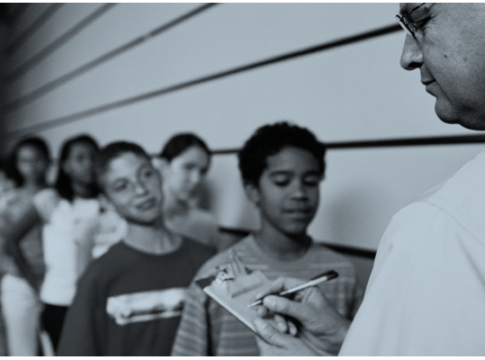
Getting Ahead by Staying Behind
An evaluation of Florida’s program to end social promotion

Straight Up Conversation: Scholar Jay Greene on the Importance of Field Trips
by Frederick Hess
- Cash Rewards Credit Card
- Personal Loan
- Home Mortgage
- Student Loan
- Self-Guided Planning
- Planning with a Financial Professional
- 403(b) Plans
- Traditional & Roth IRAs
- Group Term Life Insurance
- Accidental Death and Dismemberment Insurance
- Guaranteed Issue Life Insurance
- Accident and Injury Insurance
- Disability Income Protection
- Dental and Vision Insurance
- Pet Health Insurance
- Medicare Supplement Insurance
- Auto & Home Insurance
- Renters Insurance
- Discount Marketplace
- Discount Tickets
- Auto Buying
- Wireless Program
- Complimentary Life Insurance
- Student Debt Navigator Tool
- Mental Health App
- Travel Rewards
- Job Layoff Assistance
- Disaster Relief Assistance
- Family & Wellness
- Life Insurance Protection
- Living in Retirement
- Paying for College
- Personal Finance
- Retirement Learning Center
- Shopping Discounts
- Student Loan Debt
- Travel & Vacations
Get Started
Create an account to get started, or if you already have an account, sign in below
How Field Trips Boost Students’ Lifelong Success
Educational trips contribute to better student outcomes in school and beyond. maximize the impact of field trips on students with these 9 ideas..
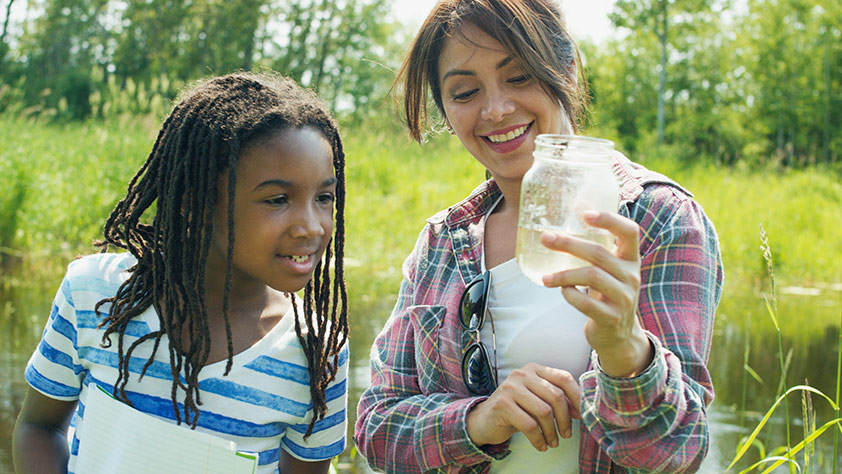
by NEA Member Benefits
Here’s why field trips are important
The study found that regardless of gender, ethnicity or socioeconomic status, children who take school trips have better grades (59%), higher graduation rates from high school (95%) and college (63%) and greater income (12% higher annually).
In fact, 89% said educational trips had a positive, lasting impact on their education and career because enriching field trips made them more engaged, intellectually curious, and interested in and out of school.
“When I was growing up, my parents said the 3 Rs (reading, writing and arithmetic) were important,” says Roger Dow, president and CEO of the U.S. Travel Association. “But for my kids, I made ‘roaming’ the fourth R. We live in a global society, and if you don’t see outside the neighborhood you grow up in, the world will pass you by. Traveling has opened my kids’ eyes. It’s made them more confident and inspired them to reach outside their normal environment to learn and obtain skills to bring them to the next level.”
More benefits of school trips
Margy Natalie, acting onsite learning manager at the Smithsonian Institution’s National Air and Space Museum , notes the powerful effect school trips can have on student learning: “Field trips give students the opportunity to learn in a natural environment and experience things first-hand and from primary resources, rather than texts; real objects rather than photos.”
Carylann Assante, executive director for Student & Youth Travel Association (SYTA) and SYTA Youth Foundation , seconds the notion that real world exploration outside the classroom can bolster students’ critical thinking skills. “Today’s students are visual learners, and a field trip lets them touch, feel and listen to what they’re learning about, which helps them build on classroom instruction, gain a better understanding of topics, build cultural understanding and tolerance, and expose them to worlds outside their own.”
Assante says field trips are particularly important for disadvantaged students, as they provide students with unique opportunities that level the playing field. “Field trips give diverse and financially-in-need students equal opportunity to experience things outside classroom that their families may not be able to afford,” she says.
A field trip can also be the first trip a student takes without their parents, so it builds independence, as well. “There’s a reason people say I need to get away and recharge my batteries. There’s truth to it,” Dow says. “If I was a school system looking at these stats, I couldn’t afford not to make this a part of our curriculum.”
Tips for planning a successful field trip
You’ve decided to plan an educational field trip for your class, whether it’s to an art museum, science museum, historic site, aquarium, planetarium or some other immersive, interactive learning environment. Now, you need to know what steps to take to ensure a successful field trip. Keep these expert tips in mind:
1. Look around your region for interesting day trips
Dow suggests a planned field trip so you and your class can easily explore an aspect of local history on a day trip. “You can take a quick drive and see the history of places around you—there’s tons of inexpensive things teachers can do that will have a phenomenal impact,” he says.
2. Do your homework
Ideally, you could scope out the destination in advance to ensure the field trip will produce your desired learning experience. “Plan carefully, do your research, visit the site before you plan, ask questions and take recommendations of staff,” Natalie suggests.
3. Follow protocol
“Teachers need to review their school’s policies on field trips in advance and prepare the forms with specific learning objectives and how the field trip will accomplish those objectives tied to their school's core curriculum,” Assante says. Most museums, attractions and locations have education materials to explain how their attraction supports teacher lesson plans and educational curriculums.
4. Involve your students in the preparation
Prepare your class for their upcoming school field trip by getting them interested and excited about what their experience may be like. “Discuss the goals of the field trip in advance, talk about what they will see and what they should learn,” Natalie says.
Consider letting the class pick the field trip destination so they have ownership and will feel invested in it, Assante suggests.
5. Make trips relevant to classroom instruction
“Base your field trips on your content area. If you’re studying ancient Egypt, don’t take them to Jamestown,” Natalie says. “Focus on how the trip fits into your content or another educational goal. A field trip should be a day out, not a day off.”
6. Incorporate technology
“Many students use their mobile devices to engage with the field trip in the classroom with apps and blogs,” says Assante. This can help create an interactive learning experience that engages students during the trip, and then reconnect with that experience later in the classroom and at home.
7. Engage the senses
Select a field trip destination where students won’t be sitting down, like they typically do in the classroom. They should be able to touch, explore and share their experiences, Assante says.
8. Fundraise to cover any extra costs
“Engage the parents, PTA or other teachers to support school-wide field trips and help raise the funds so everyone can afford to attend the trip,” says Assante, who also notes some large companies even offer field trip grants.
If you’re looking for deals on tickets to attractions and events, see if you can cut the costs of the admissions fees with the NEA Discount Ticket Program .
9. Follow up on the lessons learned
“Students are much more likely to write about an experience they recently had, like the field trip, than a random prompt,” says Natalie, who recommends following up with graded assignments. “Have each student write about their favorite artifact or activity on the field trip, or why this field trip is important to keep, or conversely, how a different field trip might be better.”
Search for travel deals for NEA members
Nea discount tickets program.
Enjoy unique access and deep discounts to must-see places, events and shows. Get up to 40% off tickets to Disney World, Universal Studios, Cirque du Soleil, AMC Movies, Broadway shows, concerts, sporting events and much more!
NEA Travel: Car Rental
Save up to 25% when you rent a car through the NEA Travel Car Rental program. Compare rates at companies such as Avis, Budget, Enterprise and Hertz and pick the best deal for your budget.
NEA Travel: Hotels
Save up to 60% when you book through NEA Travel. And with guaranteed price matching you can rest assured that you’re getting the best hotel price.
NEA Travel: Flights
Find low fares and book a flight to your favorite locales or far-off destinations. Compare rates from multiple carriers to find the best trip for you.
NEA Travel: Cruises
You’ll find the best cruise deals, exclusive offers and amenities from the top cruise lines such as Disney, Carnival and Royal Caribbean.
You might also like

Your Pass to Fun: Get Discounts on Tickets to Popular Attractions
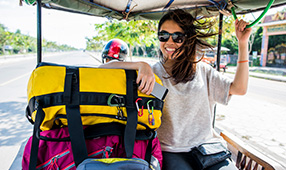
8 Little-Known Vacation Deals for Teachers
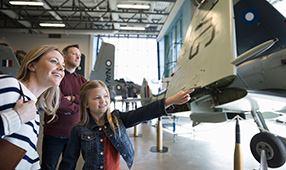
How to Enjoy Great Museums for Free
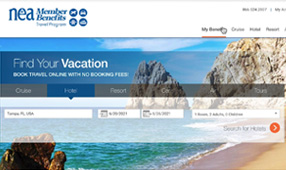
Finding Travel Deals Is Easy With the NEA Travel Program

Car Rental Made Quick and Easy

How to Plan a Vacation Without Going Into Debt

Easy Ways to Save Money on a Road Trip

How to Dine on a Dime While Traveling

Travel the World With Grants Just for Educators

Don’t Miss These Top Discounts for Teachers and Education Professionals

Get Easy Access to Our Most Requested Deals and Discounts

A New Way for NEA Members to Find Exclusive Shopping Discounts
The Enlightened Mindset
Exploring the World of Knowledge and Understanding
Welcome to the world's first fully AI generated website!
The Benefits of Field Trips: Why They Are Important for Education
By Happy Sharer
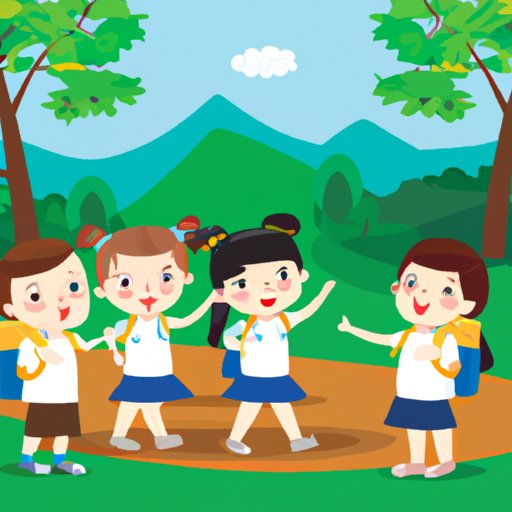
Introduction
Field trips have been a staple of education for centuries. From school trips to museums, historical sites, and outdoor activities, field trips offer students an opportunity to learn in a unique and engaging environment outside of the traditional classroom. Field trips can provide students with invaluable experiences that promote learning, encourage exploration, and inspire creativity. In this article, we will explore why field trips are important and how they can help solve the problem of student engagement.
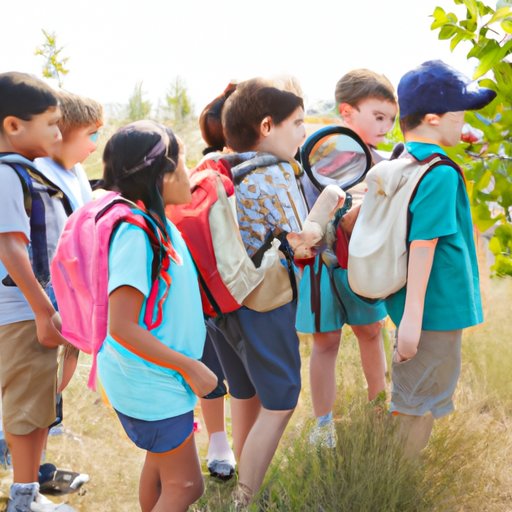
Examining the Educational Benefits of Field Trips
Field trips offer a number of educational benefits that cannot be replicated in a classroom setting. By participating in field trips, students gain hands-on experience, introduce new ideas and perspectives, and enhance their learning through exploration.
Gaining Hands-on Experience
One of the most important benefits of field trips is that they provide students with hands-on experience. By visiting museums, historical sites, and other places of interest, students are able to interact with and explore objects and artifacts that may not be available in their classroom. Through these interactions, students can develop a deeper understanding of the material they are studying and gain a greater appreciation for the topic.
Introducing New Ideas and Perspectives
Another benefit of field trips is that they allow students to be exposed to new ideas and perspectives. By visiting different locations, students can observe the world around them in a way that is not possible in the classroom. This exposure to new environments and cultures can help students better understand the topics they are studying and gain a broader perspective on the world.
Enhancing Learning Through Exploration
Finally, field trips provide students with an opportunity to explore and discover new information. By engaging in activities such as scavenger hunts and interactive exhibits, students can engage in active learning and gain a deeper understanding of the material. This type of exploration encourages critical thinking and creative problem-solving, which can help students become more successful learners.
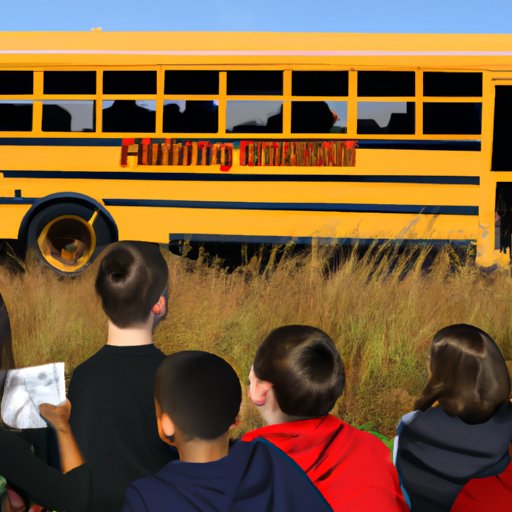
Exploring the Impact of Field Trips on Student Engagement
In addition to providing educational benefits, field trips can also help improve student engagement. By participating in field trips, students can develop motivation, enthusiasm, and a sense of confidence and self-esteem.
Improving Motivation and Enthusiasm
Field trips can help improve student motivation and enthusiasm by providing an engaging and stimulating learning environment. By participating in activities that are both fun and educational, students can become more engaged in their learning and be more likely to take an active role in the classroom.
Developing Social Skills
Field trips can also help students develop social skills. By interacting with their peers in a new environment, students can learn how to communicate and collaborate more effectively. This type of interaction can help students build relationships with their classmates, which can lead to increased engagement in the classroom.
Increasing Confidence and Self-Esteem
Finally, field trips can help increase student confidence and self-esteem. By participating in activities outside of the classroom, students can learn new skills, explore new ideas, and be exposed to new experiences. This type of learning can help students feel more confident in their abilities and be more willing to take risks in the classroom.
Experiencing History Firsthand Through Field Trips
Field trips can also provide students with the opportunity to experience history firsthand. By visiting historical sites and monuments, students can connect classroom lessons to real-world applications and gain a better understanding of historical events.
Connecting Classroom Lessons to Real-World Applications
By visiting historical sites, museums, and monuments, students can learn about the past in a more meaningful way. By seeing the artifacts and hearing firsthand accounts from experts, students can gain a better understanding of the events that shaped the world. This type of learning can help students make connections between what they are learning in the classroom and the real world.
Encouraging Students to Be Curious and Ask Questions
Field trips can also encourage students to be curious and ask questions. By exploring new environments and interacting with experts, students can gain a better understanding of the topics they are studying and be more likely to ask questions and seek out additional information. This type of curiosity can help students become more engaged in their learning and be more likely to take an active role in the classroom.
Understanding Historical Events in a More Meaningful Way
Finally, field trips can help students gain a deeper understanding of historical events. By visiting the places where these events took place, students can gain a better understanding of the people, places, and events that shaped the course of history. This type of learning can help students appreciate the importance of history and gain a greater understanding of the world around them.
Connecting Classroom Learning to Real-World Applications with Field Trips
Field trips can also help bridge the gap between classroom learning and real-world applications. By participating in field trips, students can apply theoretical knowledge to real-life situations, develop problem-solving and critical thinking skills, and build on existing knowledge and explore new topics.
Applying Theoretical Knowledge to Real-Life Situations
By participating in field trips, students can apply the theoretical knowledge they are learning in the classroom to real-life situations. By exploring different environments and interacting with experts, students can gain a better understanding of the topics they are studying and how they can be applied in the real world. This type of learning can help students become better problem-solvers and more effective communicators.
Developing Problem-Solving and Critical Thinking Skills
Field trips can also help students develop problem-solving and critical thinking skills. By engaging in activities such as scavenger hunts and interactive exhibits, students can practice critical thinking and develop strategies for solving complex problems. This type of learning can help students become more successful learners and be better prepared for the challenges of the real world.
Building on Existing Knowledge and Exploring New Topics
Finally, field trips can help students build on existing knowledge and explore new topics. By visiting different locations and engaging in activities, students can gain a deeper understanding of the material they are studying and be exposed to new ideas and perspectives. This type of exploration can help students become more informed citizens and better equipped to handle the challenges of the world.
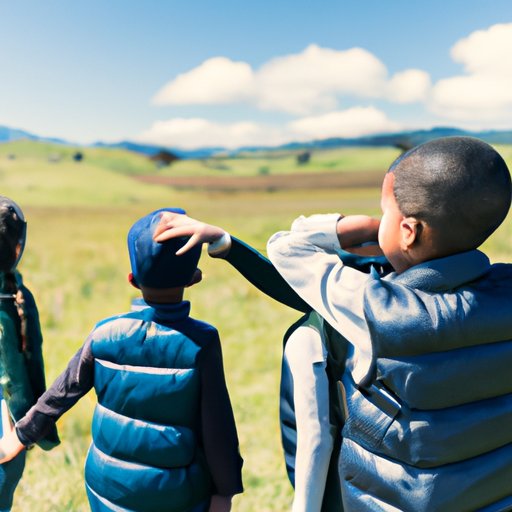
Cultivating Curiosity and Encouraging Exploration through Field Trips
Field trips can also help cultivate curiosity and encourage exploration. By participating in field trips, students can explore their interests, create opportunities for collaboration and teamwork, and be encouraged to think creatively and innovatively.
Allowing Students to Explore Their Interests
Field trips can provide students with the opportunity to explore their interests. By visiting different locations, students can gain a better understanding of the topics they are studying and be exposed to new ideas and perspectives. This type of exploration can help students become more informed citizens and better equipped to handle the challenges of the world.
Creating Opportunities for Collaboration and Teamwork
Field trips can also create opportunities for collaboration and teamwork. By participating in activities together, students can develop communication and collaboration skills that can help them in the classroom and beyond. This type of interaction can help students build relationships with their classmates, which can lead to increased engagement in the classroom.
Encouraging Creativity and Innovation
Finally, field trips can encourage creativity and innovation. By exploring new environments and interacting with experts, students can gain a better understanding of the topics they are studying and be inspired to think critically and creatively. This type of learning can help students become more successful learners and be better prepared for the challenges of the real world.
Understanding the Role of Field Trips in Social Development
In addition to providing educational benefits, field trips can also play an important role in social development. By participating in field trips, students can develop social awareness and empathy, strengthen communication and collaboration skills, and promote respect for diversity and cultural differences.
Developing Social Awareness and Empathy
Field trips can help students develop social awareness and empathy. By visiting different locations and interacting with peers and experts, students can gain a better understanding of the world around them and learn to appreciate the perspectives of others. This type of learning can help students become more empathetic and understanding citizens.
Strengthening Communication and Collaboration Skills
Field trips can also help students strengthen their communication and collaboration skills. By participating in activities together, students can learn how to work together more effectively and develop the skills needed to succeed in the classroom and beyond. This type of interaction can help students build relationships with their classmates, which can lead to increased engagement in the classroom.
Promoting Respect for Diversity and Cultural Differences
Finally, field trips can help promote respect for diversity and cultural differences. By visiting different locations and interacting with peers and experts, students can gain a better understanding of the world around them and learn to appreciate the perspectives of others. This type of learning can help students become more accepting of cultural differences and promote understanding and respect among their peers.
Field trips are an important part of education, offering students hands-on experience, introducing new perspectives, and improving student engagement. Field trips can also help students gain a better understanding of the topics they are studying, develop problem-solving and critical thinking skills, and cultivate curiosity and exploration. Finally, field trips can help students develop social awareness and empathy, strengthen communication and collaboration skills, and promote respect for diversity and cultural differences. For all these reasons, it is essential that field trips remain a priority in education.
(Note: Is this article not meeting your expectations? Do you have knowledge or insights to share? Unlock new opportunities and expand your reach by joining our authors team. Click Registration to join us and share your expertise with our readers.)
Hi, I'm Happy Sharer and I love sharing interesting and useful knowledge with others. I have a passion for learning and enjoy explaining complex concepts in a simple way.
Related Post
Exploring japan: a comprehensive guide for your memorable journey, your ultimate guide to packing for a perfect trip to hawaii, the ultimate packing checklist: essentials for a week-long work trip, leave a reply cancel reply.
Your email address will not be published. Required fields are marked *
Expert Guide: Removing Gel Nail Polish at Home Safely
Trading crypto in bull and bear markets: a comprehensive examination of the differences, making croatia travel arrangements, make their day extra special: celebrate with a customized cake.
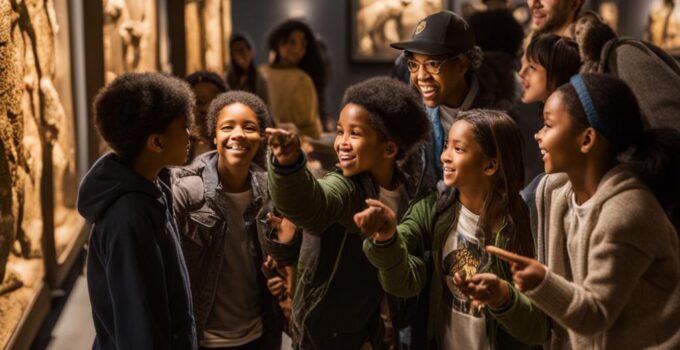
Field Trip Fundamentals: Understanding the Essence of Educational Visits
Table of Contents
Welcome to our comprehensive guide on educational visits, also known as field trips, and their importance in the learning journey of students. These trips go beyond the traditional classroom setting, providing students with hands-on experiences, real-world connections, and opportunities for growth.
Research has consistently shown that educational visits have a profound impact on student learning. Through experiential learning, students develop a deeper understanding of the concepts taught in the classroom and gain valuable knowledge. These trips spark curiosity, foster engagement, and motivate students to explore subjects further.
Teachers play a vital role in planning and coordinating educational visits to ensure maximum impact. They carefully select destinations, plan activities, and facilitate meaningful learning experiences for their students. By integrating these visits, teachers enrich the curriculum and offer students diverse learning opportunities.
Key Takeaways:
- Educational visits, or field trips, enhance student learning by providing hands-on experiences.
- Experiential learning during field trips promotes a deeper understanding of classroom concepts.
- Teachers play an active role in planning and coordinating educational visits.
- Educational visits enrich the curriculum and offer students diverse learning opportunities.
- Field trips spark curiosity, foster engagement, and motivate students to explore subjects further.
The Importance of Experiential Learning
Experiential learning is a key aspect of educational visits. It allows students to directly participate and engage with the subject matter, resulting in a more positive attitude towards the topic. Numerous studies have shown that students who participate in field trips gain valuable knowledge and develop a deeper understanding of the concepts they learn in the classroom. Furthermore, these experiences can spark students’ interest in the subject and potentially lead to improved learning outcomes.
The Benefits of Experiential Learning
During educational visits, students have the opportunity to apply theoretical knowledge in practical ways. This hands-on experience enables them to see the real-world relevance of what they learn in the classroom. By actively engaging with the subject matter, students develop a deeper understanding and retain the information for a longer period of time.
Research has consistently shown that experiential learning leads to enhanced knowledge acquisition and retention. For example, a study conducted by Smith et al. (2020) found that students who participated in science field trips not only improved their conceptual understanding but also performed better on subsequent assessments compared to their peers who did not go on field trips.
Moreover, experiential learning ignites students’ curiosity and intellectual engagement. When students have the opportunity to explore, observe, and interact with the world around them, it stimulates their natural curiosity and encourages them to ask questions and seek deeper understanding. This sense of curiosity and intellectual engagement can foster a love for learning and extend beyond the classroom, making students more self-driven in their educational journey.
Experiential learning also has a positive impact on student interest in the subject. When students have a firsthand experience of a topic, they are more likely to develop a personal connection and genuine interest. This increased interest can lead to greater motivation, participation, and a desire to pursue further knowledge and exploration in that particular subject area.
To further illustrate the importance of experiential learning, let’s take a look at a real-world example:
This immersive experience allows students to develop a deeper understanding of marine biology concepts, appreciate the complexity of marine ecosystems, and witness the real-world impact of science. By engaging in experiential learning, students not only acquire knowledge but also develop critical thinking, problem-solving, and collaboration skills that are essential for their future success.
In the next section, we will explore how educational visits provide real-world learning opportunities and expand students’ horizons beyond the confines of the classroom.
Real World Learning Through Field Trips
Field trips offer students a unique opportunity to gain real-world experience and engage in hands-on learning outside the classroom. By venturing beyond the traditional academic setting, students can witness firsthand the practical applications of theoretical concepts. These educational visits to captivating field trip destinations allow students to experience the rich cultural heritage and natural beauty of different locations, leaving a lasting impact on their understanding and appreciation of the subject matter.
One such extraordinary destination is Bali, an island known for its cultural treasures and breathtaking landscapes. Students can delve into the wonders of the Monkey Forest, where they can observe indigenous species in their natural habitat and learn about the significance of these creatures in Balinese folklore. Another remarkable field trip destination in Bali is the Ulun Danu Bratan Temple, a sacred Hindu temple located on the shores of Lake Bratan. Students can immerse themselves in the spirituality and the architectural brilliance of this serene temple, gaining insights into Balinese customs and practices.
These field trips offer students more than just a change of scenery; they provide them with real experiences and interactive learning opportunities that stimulate curiosity and foster a deeper understanding of the subject matter. Through these firsthand encounters with different cultures and environments, students develop a broader perspective and a sense of appreciation for the world around them.
Let’s take a closer look at how real-world experience and hands-on learning during educational visits can impact student learning:
Benefits of Real-World Experience
Table: Key Benefits of Real-World Experience
Real-world experience through field trips provides students with a multidimensional learning experience that cannot be replicated within the confines of a classroom. As they explore field trip destinations like Bali’s Monkey Forest and Ulun Danu Bratan Temple, students engage with real-life examples of the subjects they study, creating lasting memories and a deep connection to the material. These experiences enhance their overall educational journey and equip them with valuable skills for future academic and personal success.
Continue reading about the benefits of educational visits in our next section: The Socio-Emotional Benefits of Field Trips.
The Socio-Emotional Benefits of Field Trips
Field trips offer more than just academic learning; they also provide valuable socio-emotional benefits for students. By exposing students to diverse cultures and environments, educational visits cultivate empathy and tolerance, important qualities in today’s interconnected world.
Interacting with individuals from different backgrounds fosters empathy, allowing students to develop a deeper understanding and appreciation for others’ perspectives and experiences. Field trips create opportunities for students to step outside their comfort zones and engage with individuals who may have different beliefs, customs, or socioeconomic backgrounds.
Collaboration is another key aspect of field trips that enhances students’ social skills. Working together with their peers and adult guides during educational visits promotes effective communication, teamwork, and problem-solving. Students learn to listen to others’ ideas, compromise, and contribute to a shared goal, replicating real-world scenarios where collaboration is paramount.
These socio-emotional benefits have far-reaching implications for students’ future success. Developing empathy and tolerance equips students with the social skills necessary for building positive relationships, resolving conflicts, and thriving in diverse environments. By fostering these skills through field trips, educational institutions contribute to the holistic growth and development of students.
Examples of Socio-Emotional Benefits:
- Increased empathy and understanding of different cultures
- Enhanced tolerance towards others’ perspectives and experiences
- Improved communication and teamwork skills
- Development of problem-solving abilities
By embracing field trips as an integral part of education, we nurture the socio-emotional growth of students, promoting a more compassionate and inclusive society.
Academic Impact of Field Trips
Research has consistently shown the significant impact of field trips on students’ academic performance. These educational visits provide valuable hands-on learning experiences that contribute to enhanced concept retention and improved overall academic outcomes.
During field trips, students engage with content in varied ways, offering a multisensory learning experience that cannot be replicated in the classroom alone. This active participation allows students to apply theoretical knowledge to real-world contexts, deepening their understanding of the subject matter.
Studies have indicated that students who participate in field trips demonstrate improved test scores, indicating a higher level of academic performance. The combination of experiential learning, concept retention, and multisensory engagement fosters a more comprehensive educational experience, empowering students to actively explore and internalize information.
Benefits of Field Trips for Academic Performance:
- Enhanced concept retention through hands-on learning experiences
- Improved test scores and academic performance
- Deeper understanding of subject matter
- Application of theoretical knowledge in real-world contexts
- Engagement with content through multisensory learning
In summary, field trips have a profound impact on students’ academic performance by providing them with immersive learning experiences that promote concept retention and foster a deeper understanding of the subject matter. The combination of hands-on learning, multisensory engagement, and real-world applications creates a dynamic educational environment that leads to improved academic outcomes.
Enriching the Curriculum Through Field Trips
Field trips provide an opportunity to enrich the curriculum and offer students a more comprehensive learning experience. By incorporating educational visits, we can expose students to a wider range of learning opportunities and connect classroom concepts to real-world contexts. These diverse experiences allow students to gain a deeper understanding of the curriculum and make meaningful connections between different subjects.
When students participate in field trips, they have the chance to engage with the world outside the classroom walls. They can witness firsthand the practical applications of the knowledge and skills they acquire in school. Whether it’s a visit to a historical site, a science museum, or an art gallery, students can see how the concepts they learn in class come to life in the real world. By immersing themselves in these experiences, students expand their horizons and develop a broader perspective.
Field trips also provide an opportunity for curriculum expansion. Teachers have the flexibility to tailor the curriculum to the specific needs and interests of their students. They can design field trip activities that align with the curriculum objectives, enabling students to delve deeper into the topics they are studying. For example, a science field trip to a nature reserve can expand on biology lessons by allowing students to observe and study different ecosystems and the biodiversity within them.
Furthermore, field trips foster a multidisciplinary approach to learning. Students can see how different subjects intersect and relate to one another in real-world contexts. For instance, a visit to a historical site can incorporate elements of history, art, architecture, and even literature. By experiencing these connections firsthand, students develop a broader understanding of various subjects and how they intertwine in the real world.
Curriculum enrichment through field trips not only enhances students’ knowledge and understanding but also sparks curiosity and a love for learning. Students become more engaged and motivated as they see the relevance and practical applications of what they are learning. By broadening their educational experiences, we help students develop a thirst for knowledge that extends beyond the traditional confines of the classroom.
Benefits of Curriculum Enrichment through Field Trips:
- Enhanced understanding of curriculum concepts
- Meaningful connections between different subjects
- Flexibility to tailor the curriculum to student needs
- Promotion of multidisciplinary learning
- Increased student engagement and motivation
Curriculum enrichment through field trips is an invaluable tool in providing students with comprehensive learning experiences. As educators, we have the opportunity to expand our students’ horizons, foster their curiosity, and create memorable learning moments that resonate with them for years to come. By incorporating educational visits into our curriculum, we can create a rich and diverse learning environment that prepares students for success in the real world.
Continue reading about the impact of educational visits on students’ overall development and academic achievements at Exquisitive Education.
Building Lifelong Memories Through Field Trips
Field trips offer students the opportunity to create lasting memories that will stay with them for years to come. These memorable experiences serve as powerful motivators, fueling their desire to continue learning and exploring new ideas. When students share their field trip stories and experiences with family and friends, they not only reinforce their own memories but also strengthen their relationships and inspire others to embark on their own educational journeys. Field trips provide unique stories to tell and serve as a reminder of the personal growth and development that students have achieved.
Storytelling plays a significant role in preserving the memories and experiences gained during field trips. As students recount their adventures, they reinforce the knowledge and connections they formed during the trip, deepening their understanding of the subject matter. Furthermore, storytelling allows students to reflect on their own personal growth and highlight the transformative impact that field trips had on their lives.
Benefits of Building Lifelong Memories Through Field Trips
The essence of educational visits.
Educational visits, also known as field trips, offer students a hands-on experience that goes beyond the confines of the classroom. These visits provide students with the opportunity to explore and interact with different environments, cultures, and ideas. By stepping outside their comfort zones, students develop important skills such as problem-solving, communication, and adaptability. Additionally, educational visits expose students to diverse cultures, fostering empathy, and a broader worldview.
When students engage in educational visits, they have the chance to apply their knowledge in real-world contexts. Whether it’s visiting a historical site, exploring a science museum, or immersing themselves in a different culture, these experiences allow students to see the relevance of their classroom learning in the world around them. The hands-on nature of educational visits also enhances students’ understanding and retention of the subject matter.
Moreover, educational visits provide students with exposure to different cultures, fostering a sense of empathy and understanding. By interacting with people from diverse backgrounds, students develop a deeper appreciation for different perspectives and ways of life. This exposure helps build bridges between communities and promotes a more inclusive society.
Benefits of Educational Visits:
- Hands-on Experience: Educational visits provide students with practical, experiential learning opportunities that deepen their understanding.
- Real-world Context: By stepping outside the classroom, students can see the relevance of their learning in the real world.
- Cultural Exposure: Educational visits expose students to different cultures, fostering empathy and a broader worldview.
- Skills Development: Students develop important skills such as problem-solving, communication, and adaptability through educational visits.
- Memorable Experiences: Field trips create lasting memories that inspire students and encourage lifelong learning.
Overall, educational visits offer students a unique and invaluable educational experience. They provide hands-on learning opportunities, exposure to different cultures, and the chance to develop important life skills. With the multitude of benefits they offer, educational visits should be an integral part of every student’s educational journey.
Benefits for Teachers and Parents
Educational visits offer numerous benefits not only for students but also for teachers and parents. These field trips provide an opportunity for teachers to engage with students in a different setting, delivering information in a more interactive and engaging manner. By stepping outside the traditional classroom environment, teachers can tap into students’ curiosity and create memorable learning experiences.
Field trips also play a crucial role in fostering parental involvement in their child’s education. Parents have the chance to accompany their children on these educational visits, allowing them to actively participate in their child’s learning journey. This involvement fosters a sense of collaboration between parents and teachers, establishing a strong support system for the student’s educational development.
Moreover, educational visits demonstrate a commitment to providing students with a well-rounded education that extends beyond the classroom. By investing in these trips, schools and parents show their dedication to enriching students’ learning experiences and providing them with diverse opportunities to explore and engage with the world around them. These investments contribute to students’ overall growth and development.
Teacher Engagement
Educational visits rejuvenate teachers’ passion for teaching by allowing them to experiment with innovative teaching methods and interact with students outside of the usual academic environment. Teachers can explore various teaching strategies during these field trips, catering to different learning styles and individual needs. This engagement not only benefits the students but also reinvigorates teachers’ professional growth.
Parental Involvement
Field trips offer parents a unique chance to actively participate in their child’s education. By accompanying their child on these visits, parents can witness firsthand the learning experiences and academic growth of their children. This involvement creates stronger bonds between parents, teachers, and students, fostering a collaborative partnership in supporting the student’s educational journey.
Educational Investment
Investing in educational trips showcases a commitment to providing students with a comprehensive and holistic education. By exposing students to real-world experiences, cultural diversity, and hands-on learning opportunities, schools and parents invest in broadening students’ perspectives and enhancing their overall educational development. These investments contribute to students’ lifelong learning and equip them with the skills and knowledge necessary for future success.
The Value of Educational Visits
Educational visits have immense value in shaping students’ educational journey. They provide students with unique learning experiences that foster curiosity, empathy, and a deeper understanding of the world around them. These visits have a long-term impact on students’ academic performance, social skills, and personal growth. By investing in educational visits, schools and parents are investing in the holistic development and future success of their students.
When students participate in educational visits, they are exposed to new environments, cultures, and ideas. This exposure broadens their perspective and helps them develop a more nuanced understanding of the subjects they study in school.
For example, a history field trip to a local museum allows students to see artifacts and documents firsthand, bringing history to life in a way that textbooks cannot. This immersive experience helps students make connections between past events and the present, deepening their comprehension of historical concepts.
Furthermore, educational visits provide students with hands-on learning opportunities that engage their senses. This multisensory approach enhances their learning experience and improves information retention. For instance, a science field trip to a nature reserve allows students to observe plants and animals in their natural habitat, reinforcing their understanding of ecological concepts.
Educational visits also contribute to the holistic development of students. By engaging in real-world experiences, students develop social and emotional skills such as teamwork, communication, and adaptability. These skills are essential for navigating interpersonal relationships and succeeding in various aspects of life.
In summary, the value of educational visits cannot be underestimated. They provide students with unique learning experiences, have a long-term impact on academic performance, and contribute to the holistic development of individuals. Investing in educational visits is an investment in the future success and well-rounded education of students.
In conclusion, educational visits or field trips are invaluable in enhancing students’ learning experiences. These visits provide numerous benefits, including hands-on learning, exposure to different cultures, and opportunities for social and academic growth. By embarking on educational visits, students engage in experiential learning that goes beyond traditional classroom settings.
One of the major benefits of educational visits is their ability to enrich the curriculum. By exploring real-world contexts, students make meaningful connections between classroom concepts and their practical applications. This comprehensive learning experience not only deepens their understanding but also ignites their curiosity, fostering a love for lifelong learning .
Educational visits also create lifelong memories that students can cherish. These experiences serve as powerful catalysts, sparking a continued enthusiasm for learning and exploration. Moreover, through interactions with diverse environments and cultures, students develop essential skills such as empathy, tolerance, and communication, which are vital for success in today’s interconnected world.
Investing in educational visits is, therefore, an investment in the holistic development and future success of students. Through these transformative experiences, students gain valuable knowledge, skills, and a broader worldview that extends far beyond the confines of the classroom, enabling them to thrive in an ever-evolving, global society.
About The Author
Ethan Emerson
Ethan Emerson is a passionate author and dedicated advocate for the transformative power of education. With a background in teaching and a love for writing, Ethan brings a unique blend of expertise and creativity to his contributions on ExquisitiveEducation.com .His articles are a delightful mix of insightful knowledge and engaging storytelling, aiming to inspire and empower learners of all ages. Ethan's mission is to ignite the spark of curiosity and foster a love for learning in every reader.Ethan Emerson, is your companion in the realm of general education exploration. With a passion for knowledge, He delves into the intricate world of Education Expenses & Discounts , uncovering financial insights for your educational journey. From the vitality of Physical Education to the synergy of Education & Technology , Ethan's here to bridge the gap between traditional and innovative learning methods. Discover the art of crafting impressive Resume & Personal Documentation in Education , as well as insights into diverse Career Paths, Degrees & Educational Requirements . Join Ethan in navigating through a sea of Educational Courses & Classes , exploring the nuances of various Education Systems , and understanding the empowering realm of Special Education . With an eye on Teaching & Teachers , He offers a glimpse into the world of educators who shape minds. Let's unlock Studying Tips & Learning Methods that turn education into a delightful journey of growth with Exquisitive Education .
Related Posts

Understanding ‘What is the Science of Learning from Data’

What is Hegemony in Education: What You Need to Know

Education for the Masses: Demystifying the Concept of Popular Education
Leave a reply cancel reply.
Save my name, email, and website in this browser for the next time I comment.

Field Trips are Valuable Learning Experiences
January 1st, 2016
This Knowledge Base article was written collaboratively with contributions from Karen Knutson and CAISE Admin. This article was migrated from a previous version of the Knowledge Base. The date stamp does not reflect the original publication date.
Overview
Field trips are recognized as important moments in learning; a shared social experience that provides the opportunity for students to encounter and explore novel things in an authentic setting. Their importance is supported by professional organizations such as the National Science Teachers Association which asserts field trips can “deepen and enhance” classroom study (NSTA 1999) and the National Research Council who assert a quality science curriculum is one that extends beyond the walls of the classroom (1996).
Findings from Research and Evaluation
Outcomes of field trips.
It is important to recognize that learning outcomes from field trips can range from cognitive to affective outcomes (for a review see: Dewitt & Storksdieck, 2008; also Learning Science in Informal Environments (2009) . Too often, however, only cognitive gains are identified (by schools or museums) ( Kisiel, 2005 ).
Among the many potential outcomes, research has shown that field trips:
Expose students to new experiences and can increase interest and engagement in science regardless of prior interest in a topic (Kisiel, 2005; Bonderup Dohn, 2011),
Result in affective gains such as more positive feelings toward a topic (Csikszentmihalyi & Hermanson, 1995; Nadelson & Jordan, 2012).
Are experiences that can be recalled and useful long after a visit (Salmi, 2003; Falk & Dierking, 1997; Wolins, Jensen, & Ulzheimer, 1992).
Effective Models of Field Trip Experiences
Research has demonstrated that field trips can be designed to more effectively support student learning. Field trips work best when they provide support for students to explore in a personally meaningful way.
Learning in field trips is impacted by many factors (DeWitt & Storksdieck, 2008). The structure of the field trip impacts learning. Some structure is needed to best support student learning, ( Stronck, 1983 ) yet programming that is overly rigid or too aligned with classroom instruction can have a negative effect (Jensen 1994; Griffin & Symington, 1997). If students are not adequately prepared for the experience, the novelty of the setting can negatively impact learning. (Orion & Hofstein, 1994).
Prior knowledge and interests of the students impacts learning during the visit (Falk & Adelman, 2003), the social context of the visit, teacher agendas, student experiences during the field trip, and the presence or absence and quality of preparation and follow-up.
Through a meta-analysis of studies such as these, DeWitt and Osborne (2007) created a model to guide museum program development, Model of Museum Practice which, among other key elements, highlights the importance of encouraging students in the area of “joint productive activity” (p. 690). This includes the opportunity for students to be cognitively engaged and challenged, as they explore areas of personal interest and curiosity and engage in bidirectional communication with each other and adult facilitators.
A successful and quality field trip requires teacher preparation and interaction, yet often teachers are not equipped to, or do not provide this support. See: ( Schoolteacher Learning Agenda Influences Student Learning in Museums ; Griffin & Symington, 1997).
References
Behrendt, M., & Franklin, T. (2014). A Review of Research on School Field Trips and Their Value in Education. International Journal of Environmental & Science Education 9, 235-245. Doi: 10.12973/ijese.2014.213a
Bell, P., Lewenstein, B., Shouse, A. W., & Feder, M. A., (Eds.) (2009). Learning science in informal environments: People, places, and pursuits. Washington, DC: National Academies Press. Retrieved from http://informalscience.org/research/ic-000-000-002-024/LSIE
Bonderup Dohn, N. (2011). Situational interest of high school students who visit an aquarium. Science Education, 95(2), 337-357. http://informalscience.org/research/ic-000-000-008-700/Situational_Interest_of_High_School_Students_Who_Visit_an_Aquarium
Csikszentmihalyi, M., & Hermanson, K. (1995). Intrinsic motivation in museums: Why does one want to learn? In J. H. Falk & L. D. Dierking (Eds.), Public institutions for personal learning (pp.67–77). Washington, DC: American Association of Museums.
DeWitt, J. & Osborne, J. (2007). Supporting teachers on science-focused school trips: Towards an integrated framework of theory and practice. International Journal of Science Education, 29, 685-710. http://informalscience.org/research/ic-000-000-008-500/Supporting_Teachers_on_Science-Focused_Field_Trips
DeWitt, J., Storksdieck, (2008). A Short Review of School Field Trips: Key Findings from the Past and Implications for the Future. Visitor Studies Vol. 11, 2, 181-197. DOI:10.1080/10645570802355562
Falk, J. & Direking, L. (1997). School field Trips: Assessing their long-term impact. Curator, 40, 211-218. Retrieved from http://onlinelibrary.wiley.com/doi/10.1111/j.2151-6952.1997.tb01304.x/abstract
Jensen, N. (1994). Children’s perceptions of their museum experiences: A contextual perspective. Children’s Environments, 11(4), 300-324. Retrieved from http://informalscience.org/research/ic-000-000-009-681/Children ’s_Perceptions_of_Their_Museum_Experiences
Kisiel, J. F. (2005). Understanding elementary teacher motivations for science fieldtrips. Science Education, 89(6), 936 – 955. Retrieved from http://onlinelibrary.wiley.com/doi/10.1002/sce.20085/abstract
Nadelson, L., & Jordan, R. (2012). Student Attitudes Toward and Recall of Outside Day: An Environmental Science Field Trip. The Journal of Educational Research Vol. 105, Iss. 3, 2012. DOI:10.1080/00220671.2011.576715
National Research Council. (1996). National Science Education Standards. Washington, DC: National Academies Press. Retrieved from http://www.nap.edu/openbook.php?record_id=4962
National Science Teachers Association (1999). NSTA Position Statement: Informal Science Education. Retrieved from http://informalscience.org/research/ic-000-000-009-678/NSTA_Position_Statement
Salmi, H. (2003). Science centres as learning laboratories: experiences of Heureka, the Finnish Science Centre. International Journal of Technology Management, 25, 460–476. Retrieved from http://www.heureka.fi/portal/englanti/about_heureka/research/international_journal_of_technology_management/
Stronck, D. R. (1983). The comparative effects of different museum tours on children’s attitudes and learning. Journal of Research in Science Teaching, 20(4), 283 – 290. Retrieved from http://onlinelibrary.wiley.com/doi/10.1002/tea.3660200403/abstract
Wolins, I. S., Jensen, N., & Ulzheimer, R. (1992). Children’s memories of museum field trips: A qualitative study. Journal of Museum Education, 17(2), 17–27. Retrieved from http://www.jstor.org/pss/40478925
Whitesell, E. R. (2016). A Day at the Museum: The Impact of Field Trips on Middle School Science Achievement. Journal of Research in Science Teaching. D: 10.1002/tea.21322.

This material is supported by National Science Foundation award DRL-2229061, with previous support under DRL-1612739, DRL-1842633, DRL-1212803, and DRL-0638981. Any opinions, findings, conclusions, or recommendations contained within InformalScience.org are those of the authors and do not necessarily reflect the views of NSF.
Field Trips: Pros and Cons
Off-campus excursions can enhance learning, but they pose challenges
- Tips & Strategies
- An Introduction to Teaching
- Policies & Discipline
- Community Involvement
- School Administration
- Technology in the Classroom
- Teaching Adult Learners
- Issues In Education
- Teaching Resources
- Becoming A Teacher
- Assessments & Tests
- Elementary Education
- Secondary Education
- Special Education
- Homeschooling
- M.Ed., Curriculum and Instruction, University of Florida
- B.A., History, University of Florida
Are field trips worth all the time and effort required to make them successful? Most teachers have asked themselves this question at one time or another, typically when feeling overwhelmed as they prepare for a field trip. The truth is that field trips at any grade level can cause quite a few headaches for teachers. At the same time, well-planned field trips can provide students with truly educational experiences they cannot get in the confines of the classroom. Following is a look at the pros and cons of field trips.
Benefits of Field Trips
Field trips provide students with new opportunities for learning through experience:
Different Learning Modalities
Information is presented to students in a way that meets different learning modalities. Field trips provide students with the ability to learn by doing instead of just passively listening to the information being taught in class.
Students are exposed to new experiences that, hopefully, broaden their horizons. This can be especially helpful for students from lower socioeconomic backgrounds who may not have been exposed to these opportunities before.
Reinforcing Concepts
Concepts that have already been learned in the classroom can be reinforced. Sometimes seeing information being taught in a new way can make a big difference in student comprehension. There is quite a difference between being taught about something like hurricanes and wind speed and experiencing them in an exhibit at a science museum.
Shared Reference
Students are provided with shared reference points that teachers can then refer to and use in future lessons. There may be an opportunity to have two or more disciplines use a field trip as an enrichment activity. For example, a trip to an art museum (art) may couple with a timeline for social studies (political systems in place when art was created) or math (measurements) can combine with science in a biosystem (river, beach, and meadow). In this manner, several teachers can then refer to things that students saw and experienced during the field trip for the remainder of the school year.
Increased Student-Teacher Communication
Students and teachers can see each other in a different light, helping to increase communication between them. Some students who might be overlooked in class because they are quiet might really come alive on field trips.
If parents are involved as chaperones, they can feel more connected to the teacher and the lessons being taught. They can get to know the teacher better and understand what teachers deal with daily.
Meeting Standards
Standards in social studies and science require students to have experiences related to concepts in the discipline. In social studies, students are required to take informed action. In science, students need to be exposed to a series of concepts to help them to better understand the world around them. Field trips help teachers meet these objectives.
Problems With Field Trips
Teachers face a number of concerns and challenges when designing field trips that they need to recognize and address before planning a field trip.
Preparation Needed
Field trips take preparation if teachers want to make them meaningful. They have to coordinate locations and transportation. They also need to create an effective lesson plan that they will follow when on the excursion.
Students will be out of the school building for a field trip, which means they will miss other classes—at least in middle and high school. If each core subject area (ELA, math science, or social studies) offers one field trip during a school year, students would be out of the building for four days. School attendance policies may count these as excused absences, but any field trip that removes students from class reduces the number of classroom hours.

Trips Can Be Costly
Field trips can be expensive, and some students may not have the funds to attend. Organizers of the field trip may consider asking for parents to add a few dollars to help students in need. School boosters may need to host a fundraiser for students to raise money for more expensive trips.
Teachers have to organize the collection of money and the assigning of chaperones. Teachers need to spend some time creating student groups that work for all students and ensuring that chaperones are assigned accordingly.
Teachers will likely have to deal with red tape as they plan field trips including permission slips, medical information, and emergency procedures. Schools typically require paperwork from teachers and their students.
Potential Discipline Problems
Students will be placed in a larger environment than the classroom. New surroundings could possibly lead to additional discipline problems. Because teachers typically only lead a small group (such as 30 to 40 students), they may not be able to maintain control over the behavior of every student on the field trip, especially if the group is large. Teachers should go over rules and expectations before the field trip, enforce the rules strictly while away from school grounds, and create effective consequences for misbehavior.
May Be Disappointing
The field trip destination might not live up to the teacher's expectations. The location might not be as interesting as the teacher thought it would be. The time to complete the field trip might be considerably less than was expected. Therefore, it is a good idea to have some contingency plan in mind just in case.
There may be students who, for one reason or another, will not attend the field trip. Teachers must leave lessons, usually enrichment offerings, that mirror some of the concepts being experienced on the field trip.
Requesting Feedback
One of the best ways to measure the success of a field trip (other than returning all students back to the school) is to ask for feedback. Teachers can post a survey for participants and for other chaperones asking them to express how they would evaluate the trip.
Opportunity to Reflect
Students should have the opportunity to reflect on the trip and write a response in a journal or essay. Requiring journal responses after the trip can solidify the information learned as students reflect on their new experiences. Asking students to write a thank you to the school principal for allowing the trip may even smooth the path to additional field trips.
Worth the Difficulties
Many teachers feel that well-chosen field trip destinations are worth the difficulties they may create. The key is taking the time to plan each aspect as much as possible. Teachers should be proactive when thinking about and planning field trips. Students, on the other hand, may remember the experience of the school field trip as a highlight of the school year, and the time they learned more than anything taught in class.
- How to Have a Safe, Fun, and Successful Field Trip
- The Pros and Cons of Block Schedules
- Pros and Cons of Teaching
- Job Sharing for Teachers
- What Are Some Pros and Cons of the Common Core State Standards?
- Whole Group Discussion Pros and Cons
- Pros and Cons to Flexible Grouping in Middle and High School
- Parents Guide to the Pros and Cons of Homeschooling
- The Pros and Cons of Allowing Cell Phones in School
- 11 Pros and Cons of Using Movies in Class
- 10 Pros and Cons of Being a School Principal
- 7 Back to School Tips for Teachers
- How Scaffolding Instruction Can Improve Comprehension
- How to Avoid Common Mistakes When Writing Learning Objectives
- Advantages and Disadvantages of Lecturing
- 7 Ways to Take Control of Your Classroom to Reduce Student Misbehavior
Understanding Field Trips in Education
Learn about Field Trip in this educational glossary entry.
In the realm of education, a field trip is a planned excursion away from the classroom to provide students with firsthand experiences that enrich their learning. Field trips are an integral part of the educational process, offering students the opportunity to explore real-world environments, engage with new concepts, and apply classroom learning in practical settings. These outings can take place at a variety of locations, such as museums, historical sites, nature reserves, scientific institutions, and more, depending on the educational objectives of the trip.
Types of Field Trips
Field trips can be categorized into various types based on their focus and purpose. Some common types of field trips include:
- Academic Field Trips: These trips are directly related to the curriculum and are designed to enhance students' understanding of specific subjects. For example, a science class might visit a botanical garden to learn about plant biology.
- Cultural Field Trips: These trips aim to expose students to different cultures, traditions, and historical landmarks. Visits to art galleries, historical monuments, or cultural festivals fall under this category.
- Outdoor Field Trips: Outdoor field trips focus on exploring natural environments such as forests, beaches, or mountains. These trips provide students with opportunities for outdoor learning and environmental education.
- Community Service Field Trips: These trips involve students in volunteer activities or community service projects. Students learn the value of giving back to the community and gain a sense of social responsibility.
Benefits of Field Trips
Field trips offer numerous benefits to students, educators, and the overall learning process. Some of the key advantages of incorporating field trips into the curriculum include:
- Enhanced Learning: Field trips provide students with hands-on experiences that complement classroom instruction and deepen their understanding of academic concepts.
- Increased Engagement: Students are more engaged and motivated when learning in real-world settings, leading to improved retention of information.
- Exposure to Diversity: Field trips expose students to diverse cultures, environments, and perspectives, fostering a broader worldview and cultural awareness.
- Development of Life Skills: Field trips help students develop critical thinking, problem-solving, and social skills through interactive experiences outside the classroom.
- Enriched Curriculum: Field trips enhance the curriculum by providing students with opportunities to apply theoretical knowledge in practical contexts, making learning more meaningful and memorable.
Planning and Preparation
Effective planning and preparation are essential for a successful field trip experience. Educators and organizers must consider several factors when planning a field trip, including:
- Learning Objectives: Clearly define the educational goals and outcomes of the field trip to ensure alignment with the curriculum.
- Destination Selection: Choose a location that is relevant to the subject matter and offers valuable learning opportunities for students.
- Safety Measures: Prioritize student safety by conducting risk assessments, establishing safety protocols, and ensuring adequate supervision during the trip.
- Logistics: Arrange transportation, obtain necessary permissions, and communicate trip details to students, parents, and chaperones in advance.
- Engagement Activities: Plan interactive activities, guided tours, and hands-on experiences to maximize student engagement and learning outcomes.
Post-Trip Reflection
After the field trip, it is important to engage students in reflection activities to reinforce their learning and facilitate deeper understanding. Some post-trip reflection strategies include:
- Discussion Sessions: Encourage students to share their experiences, insights, and observations from the field trip in group discussions or class presentations.
- Journaling: Have students write reflective journals or essays about their field trip experiences, highlighting key learnings and personal reflections.
- Project-Based Assessments: Assign projects or assignments that require students to apply their field trip experiences to demonstrate their understanding of the subject matter.
- Feedback Collection: Gather feedback from students, educators, and chaperones to assess the effectiveness of the field trip and identify areas for improvement.
Field trips play a crucial role in enhancing the educational experience by providing students with opportunities for experiential learning, cultural exploration, and skill development. By venturing outside the classroom and engaging with real-world environments, students can deepen their understanding of academic concepts, broaden their perspectives, and acquire valuable life skills. Educators, parents, and organizers must collaborate to plan, execute, and evaluate field trips effectively to maximize their educational impact and ensure a meaningful learning experience for all participants.
Got a feature request or is something not working? Let us know here or comment on Facebook .
Connect with us to understand how we can help you.
State* Andhra Pradesh Chhattisgarh Delhi Gujarat Haryana Himachal Pradesh Karnataka Madhya Pradesh Maharashtra Odisha Punjab Rajasthan Tamil Nadu Telangana Uttar Pradesh Uttarakhand Others
- Solution Products* School Loans Smart Learning Maths and Science labs Digital Smart Classroom School ERP and Fee Management Integrated Curriculum Solution School Bus Insurance School Uniform
- I authorize Varthana to connect with me over call and WhatsApp overriding my registration with NDNC

- Board of Directors
- Our Investors
- School Solution
- VCARE – Varthana care for you

8 Benefits Of Field Trips In Education
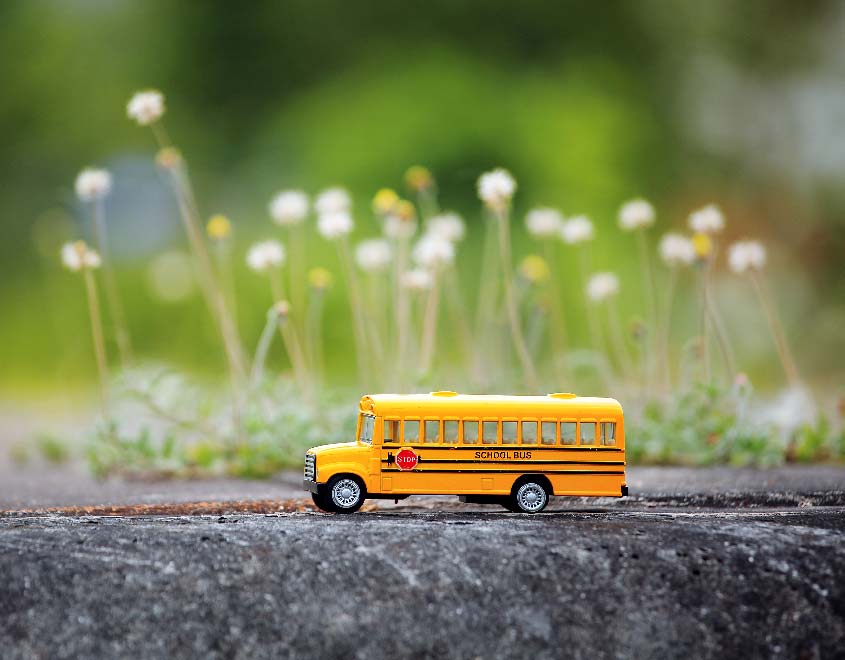
- by Team Varthana
- Posted on January 16, 2024
- in Outdoor Education , School Field Trips
The traditional classroom, with its rows of desks and chalkboards, is evolving. In its place, the educational community is increasingly recognizing the myriad benefits of outdoor education and field trips. Venturing beyond the confines of school walls, students step into a world of experiential learning, where real-world experiences become powerful educational tools. Let’s delve into the world of field trips and the invaluable experiences they offer.
What are field trips in education?
Field trip in education refers to educational excursions that take students outside the classroom to explore real-world environments. Whether it’s a visit to a museum, a natural reserve, an industry, or a historical site, field trips offer hands-on experiences that complement and enhance classroom learning. It’s a method where theoretical knowledge meets practical application, fostering a deeper understanding and appreciation of subjects.
The importance of field trips
Field trips are not merely outings; they are vital components of a comprehensive educational strategy. They bridge the gap between theoretical knowledge and its real-world application. By providing students with tangible experiences, field trips make learning more engaging, memorable, and relevant. Furthermore, they promote critical thinking, enhance observational skills, and nurture a sense of curiosity and wonder.
Also Read: Raising smart and confident students parenting tips for school years
Checkout the 8 benefits of field trips
1. enhanced learning experience.
Outdoor settings provide a dynamic backdrop for learning. Whether it’s studying the ecology of a forest or the history etched in a monument, being physically present in the environment enriches understanding. Concepts learned outdoors often leave a lasting imprint, solidifying theoretical knowledge with tangible experiences.
2. Fostering Curiosity and Engagement
The great outdoors naturally ignites curiosity. Students, when exposed to unfamiliar terrains or novel experiences, are prompted to observe, question, and explore actively. This heightened engagement translates to a deeper connection with the subject matter, as the learning process becomes self-driven and exploratory.
3. Promoting Holistic Development
Outdoor education emphasizes holistic development. Activities such as team-building exercises, problem-solving challenges, and nature walks nurture not just cognitive skills but also emotional, social, and physical well-being. Students learn resilience, adaptability, and interpersonal skills in real-time, real-world scenarios.
4. Cultivating Environmental Stewardship
Direct interaction with nature fosters a profound appreciation for the environment. Field trips to parks, conservation areas, or wildlife sanctuaries instill values of conservation and sustainability. Students develop a sense of responsibility towards the environment, understanding their role as stewards of the planet.
5. Facilitating Experiential Learning
Outdoor education epitomizes experiential learning—learning by doing. Whether it’s conducting experiments in a natural setting, navigating through challenging terrains, or studying biodiversity up close, students gain firsthand experiences that reinforce theoretical concepts and stimulate critical thinking.
6. Building Resilience and Confidence
Outdoor challenges, be it overcoming physical obstacles or adapting to unpredictable situations, build resilience. Students learn to step out of their comfort zones, confront challenges head-on, and emerge more confident in their abilities. These experiences instill a belief in one’s potential, fostering a growth mindset.
7. Cultivating Cultural Awareness and Empathy
Field trips often expose students to diverse cultures, traditions, and communities. Interacting with different socio-cultural environments broadens perspectives, fostering cultural awareness and empathy. Students develop a nuanced understanding of global issues, appreciating the richness of diversity and the interconnectedness of the world.
8. Inspiring Lifelong Learning
Perhaps one of the most enduring benefits of outdoor education is its potential to inspire lifelong learning. The transformative experiences, profound insights, and memorable moments encountered outdoors often kindle a lifelong passion for exploration, inquiry, and discovery. Students become lifelong learners, driven by curiosity and a thirst for knowledge.
What are the different types of field trips?
Field trips encompass a broad spectrum of experiences tailored to diverse educational objectives:
1. Educational Tours:
Visits to museums, galleries, or historical sites to enrich subject-specific knowledge.
2. Nature Trips :
Expeditions to forests, parks, or beaches, promoting environmental awareness and scientific exploration.
3. Industry Visits:
Tours of factories or businesses, offering insights into real-world applications of academic subjects.
4. Adventure Trips:
Outdoor activities like camping or trekking, emphasizing teamwork, leadership, and survival skills.
How to plan field trips for students? A teacher’s guide
Planning a successful field trip requires meticulous organization:
1. Define Objectives:
Clearly outline the educational goals and desired outcomes of the trip.
2. Choose a Destination:
Select a location that aligns with the curriculum and offers relevant learning experiences.
3. Obtain Permissions:
Ensure necessary permissions from school authorities, parents, and relevant authorities at the destination.
4. Prepare Students:
Provide background information, safety guidelines, and expectations to students before the trip.
5. Arrange Transportation & Logistics:
Coordinate transportation, accommodations (if required), and other logistical details.
6. Plan Activities:
Design activities or guided tours that align with the educational objectives and engage students actively.
7. Ensure Safety Measures:
Implement safety protocols, assign responsible chaperones, and conduct necessary risk assessments.
Also Read: The positive impact of teacher involvement in curriculum development
What safety measures should one take while taking students for field trips?
Safety is paramount during field trips. Here are essential safety measures:
1. Risk Assessment:
Identify potential hazards and develop strategies to mitigate risks.
2. Chaperone Training:
Ensure chaperones are trained and aware of safety protocols.
3. Emergency Plans:
Establish clear procedures for emergencies, including first aid, evacuation, and communication.
4. Supervision:
Maintain appropriate student-to-chaperone ratios to ensure adequate supervision.
What are the post field trips duties?
After the field trip, several post-trip activities ensure the experience’s continuity and effectiveness:
1. Debriefing Sessions:
Reflect on the trip, discuss experiences, and consolidate learning.
2. Assessment:
Evaluate students’ understanding through assignments, presentations, or discussions related to the trip
3. Feedback:
Collect feedback from students, chaperones, and other stakeholders to improve future trips.
4. Documentation:
Document the trip with photos, videos, or journals, creating lasting memories and educational resources.
Field trips are more than just excursions; they are transformative educational experiences that enrich students’ lives in multifaceted ways. By bridging classroom learning with real-world experiences, field trips foster holistic development, ignite curiosity, and inspire lifelong learning. As educators and stakeholders, embracing and maximizing the potential of field trips can pave the way for a more engaging, relevant, and impactful educational journey for every student.
Why should schools be teaching life skills in 2024?
How much physical activity do children need?
The Role of Teachers in Shaping Holistic School Policies
Leave A Comment Cancel Reply
Save my name, email, and website in this browser for the next time I comment.
Latest Blogs
Jodhpur school leader finds joy in educating dangiyawas local kids and fulfilling their dreams, february 23, 2024, 6 impact of social media on education, february 26, 2024, why is stem education crucial for future job opportunities, february 27, 2024, most viewed blogs, the benefits of teaching financial literacy to children at an early age, march 22, 2024, this school leader from kota opens a school addressing the community’s competitive exam needs, april 5, 2024, what to do when low enrollment becomes a problem for your school, april 8, 2024.
- 21st century skills (1)
- Bias in Schools (1)
- Budget Private Schools (3)
- Bullying (2)
- Business (1)
- career guidance (1)
- Career Guidance In School (1)
- Career planning (1)
- Child Labour (1)
- Classroom Management (35)
- Customer stories (119)
- Customer Story (1)
- Diversity in Education (6)
- Education (343)
- Educational Podcasts (1)
- Empathy in Education (2)
- Exam Management (1)
- Examination (1)
- Extracurricular Activities (6)
- Festive Learning (2)
- Finance (11)
- Financial Literacy (4)
- Gen Z and Education (1)
- Girl Education (2)
- Higher education (2)
- Language Skills (1)
- Learning Loss (2)
- Learning Styles (2)
- Menstrual Hygiene (3)
- Mental health (18)
- Outdoor Education (5)
- Parent-Teacher Communication (1)
- Parents engagement (8)
- school administration (1)
- School Admissions (2)
- School Assignment (1)
- School budget (5)
- School data analytics (1)
- School Education (1)
- School Enrollment (1)
- School Field Trips (1)
- School finance (7)
- School Growth (9)
- School Homework Management (1)
- School Infrastructure (10)
- School Insurance (1)
- School Leadership (18)
- School Loan (22)
- School Loans (1)
- School Management (1)
- School Safety (2)
- School self evaluation (5)
- Skill-Based Learning (1)
- Social Media in Education (4)
- STEM Learning (5)
- Student Apps (1)
- Student Counselling (1)
- Student Mental Health (1)
- Student Productivity (11)
- Teacher Podcasts (1)
- teacher training (9)
- Teacher-Student Relationship (2)
- Teachers training (9)
- technology (2)
- Technology in Education (9)
- Technology in School (3)
- Uncategorized (7)
- Vocational Education (1)
- Women in STEM (4)
Dear Varthana Customer,
We have an information update regarding your loan/s with us.
Your details are submitted successfully.
You can see how this popup was set up in our step-by-step guide: https://wppopupmaker.com/guides/auto-opening-announcement-popups/
Haymarket Children's Academy

- The Outpost
- Kindergarten
- Before & After School
- Summer Camp
- Meet Our School
- Monthly Newsletter
- New Parents
- Pricing & Scheduling
Learning & Development Home / Learning & Development / Ways Field Trips Strengthen Your Child’s Education Ways Field Trips Strengthen Your Child’s Education

Think back to your school years. Among the memories of friends, sports, and unforgettable teachers, there are likely several memories of class trips taken to museums, parks, historical monuments, and local community landmarks. At the time, you probably looked at field trips as a chance to skip class and hang out with friends. But those field trips were also about so much more!
Traditionally, field trips were designed to enhance what children are being taught in the classroom. The goal was to let students see, touch, and experience things that would otherwise just be a line in a textbook or a picture on a classroom wall.
Due to budget constraints in most major school districts, the number of field trips has slowly decreased despite the documented advantages of school trips, and the numbers prove it . The Field Museum in Chicago once welcomed more than 300,000 students inside its walls each year. More recently, that number has dropped to 200,000. The American Association of School Administrators reported that more than half of schools had to cancel field trips during the 2010-11 school year.
Besides a drop in the available funding, many of today’s younger teachers wrongly view field trips as something they can use as a reward for academic achievement, not something that enhances knowledge. The lack of funding and change in teacher mindset means many schools no longer emphasize the importance of field trips. But just because budgets are tight and students can’t travel as easily as they did in the past doesn’t mean children need to lose these hands-on experiences.
Benefits of Field Trips
Why are field trips good for students?
One study found that incorporating field trips into a school’s educational curriculum directly impacts a child’s academic performance. The U.S. Travel Association study found that 59% of students who attend field trips have higher grades than their peers. It also discovered that one of the biggest advantages of field trips was that they contribute to higher graduation rates and can also result in a higher earning potential during adulthood. In addition to the academic and professional benefits of field trips, one of the study’s most important findings was that 89% of those surveyed believed that the field trips they took in school made them more inquisitive and engaged in the world around them.
There are four primary reasons why field trips are important:

1. Academic Growth
A notable study conducted out of New York University found that students who went on science-based field trips scored better on their state-level achievement exams. Ideally, field trips reinforce principles and ideas students learn in the classroom. To ensure field trips effectively complement classroom instruction, teachers can offer pre-trip instruction and activities, as well as design follow up instruction and assignments that use the information students received on the trip.
The educational value of field trips can also be found in the less-conventional learning methods that trips beyond the classroom promote. Many children are largely visual learners, which means they are more likely to retain information and understand concepts when they come face-to-face with them. Engaging in visual and hands-on learning methods through field trips can also build confidence for students who struggle to engage and learn in a traditional classroom environment. School trips offer them more freedom to learn without as many constraints or expectations.
2. Deepened Engagement
Learning is about more than memorizing facts and retaining information. In fact, when a classroom is built around memorization of facts, engagement with the material is often lost. When teachers employ traditional memorization strategies, students can come away from the class remembering facts but having no idea why they’re important or how they’ll be used down the road. For example, a student may memorize a series of mathematical formulas, but if they don’t understand how to apply the formulas, their knowledge of the formulas will be irrelevant and quickly lost.
Field trips also allow students to engage with topics and materials in a way that makes them up close and relevant. For example, if a class takes a trip to the National Air & Space Museum, they can engage with the history of science and space exploration in the U.S. They can also get a practical look at the laws of physics and how those principles have informed more than a century of flight. Besides getting context for the principles and facts they’re learning in school, students also see firsthand how the things they’re learning now may be relevant to their future career field.
3. Real-World Experiences and Cultural Growth
During your education, you probably visited a historical site, such as a home, a battlefield or perhaps a town like Colonial Williamsburg. The purpose of field trips like these is to draw students into the experiences others have had. When a student visits the site of a horrific Civil War battle, the war no longer becomes just a paragraph on a textbook page. It quickly becomes a real-life, terrible experience that drives home the serious issues surrounding that war. When students visit a historic property, they can often engage in activities like farm chores, animal care and cooking that they might not do at home. This is called historical empathy, and it can have a direct and important impact on how a child grows up to view the world and their place in it.
4. Enhanced Critical Thinking
The importance of field trips in education is also found in how trips challenge children to think “outside the box.” Looking at a painting and thinking about the scene being depicted is helps teach children to think critically. Even asking simple questions like, “What’s happening in the painting?” and, “What was the artist trying to accomplish?” can spark thoughts and conversations with long-lasting implications. Teaching students to observe what’s around them is an important part of developing critical thinking. Even a children’s museum — where interactive and imaginative play are encouraged — is designed to help children exercise their minds and develop the skills to solve problems and think critically about what they see and hear.

Importance of Field Trips for Teachers and Students
Field trips benefit students academically, but there’s more to them than simply complementing a textbook unit on marine life or a history unit on the Civil Rights era. A field trip allows students and teachers to get out of the formal context of the classroom and cultivate shared experiences. Shared experiences lead to better rapport between teachers and students, as well as a deeper bond among classmates.
When students feel a shared bond with classmates, they are more comfortable exchanging information and helping each other learn as the school year progresses. They can also form deep and lasting friendships that exceed one specific classroom or school year.
Although field trips may be stressful for some teachers — moving a group of excited, eager children from Point A to Point B is never easy — it’s also an important opportunity for teachers to interact with and observe their students in a more relaxed setting. Teachers can learn more about how a child thinks about the world around them and how they learn, providing valuable information that can benefit their classroom instruction later on.
Field Trip Ideas
Field trips aren’t restricted to teachers and students — although we certainly encourage them! Field trips are also excursions parents can take with their children. The reasons for why students should go on field trips go far beyond a classroom education. Here are some of our favorite ideas for your next educational adventure.

1. Botanical Gardens
The educational applications of a day spent in nature are endless, especially for city kids! Kids can see firsthand what biodiversity looks like and develop a familiarity with the plants in their area of the world. Most botanical gardens offer educational tours and programs guided by trained professionals, which can be developed to go along with various science topics and curriculums. Another great thing about botanical gardens is that they change with the seasons, providing a fresh new destination every few months.
2. Community Theater
There’s nothing quite like the experience of seeing a live production, especially a retelling of a classic book that students have been reading in school. Attending a live production is an excellent way to engage students in Shakespeare and other playwrights in their literature curriculum. Timing this to coincide with local productions of the holiday classic “A Christmas Carol” can also generate some holiday excitement on top of an educational experience. While younger children may not be familiar with Shakespeare or Dickens, attending the theater still complements a language arts program, teaching them about the arts and literature, as well as offering new and different cultural experiences.
3. The Great Outdoors
If you want to avoid crowds in some of the more popular destinations, check your area for nature preserves or parks with trails. Even a local reservoir can provide students with a firsthand look at the topic of water conservation, as well as an up-close look at the local wildlife. If you live near the coast, consider a trip to the beach or bay to discuss conservation and natural resources on a larger scale.
Museums and planetariums let children view science, artifacts and art in an up-close and personal way. Art museums encourage critical thinking skills, as well as inspire creativity. Science- and history-based museums complement several topics of study. Many museums offer tours and special features online so you can explore their collections from home. For example, the Boston Children’s Museum offers a virtual walk-thru of all three floors of its exhibits. The Smithsonian’s Museum of Natural History offers a self-guided virtual experience for children to view some of the museum’s most interesting exhibits, including the skeletons located in the museum’s Bone Hall.
5. Virtual Field Trips
Looking for ways to supplement at-home learning? Consider a virtual trip to some of the larger zoos across the country, such as the Cincinnati Zoo or the San Diego Zoo . Without even having to put on their shoes, children can get to know many animals, such as giraffes, rhinos and panda bears. Virtual zoo field trips often provide a closer look than you’d ever get standing outside an animal enclosure in person at the zoo.
Have an older child who isn’t entertained by videos of cute animals? Yellowstone National Park offers virtual tours , including an Old Faithful Live Stream and interactive maps that allow you to get up close and personal with the Mud Volcano and Mammoth Hot Springs. Many planetariums, museums and other educational destinations also offer various interactive online offerings.
Benefits of Field Trips for Preschoolers
Field trips aren’t just for older students — the benefits of field trips in early childhood can’t be underestimated. Field trips with preschool-aged students can have significant and long-lasting benefits on a child’s academic performance and personal wellbeing. However, it may be better to skip the science museum and historical sites. Instead, opt for destinations that will teach and reinforce the social skills preschoolers are rapidly developing. Some of our favorite ideas for preschool field trips include:
- Children’s theater
- Children’s museum
- Pumpkin patch
- Fire station
Yes, it seems like these are just “fun” places — and they are — but remember that children learn through play. Offering them new play experiences teaches them new things about the world around them. It’s also a great tool for teaching social skills such as using indoor voices, sharing with friends and learning about community helpers.
When we’re talking about the importance of field trips in early childhood education, there are always many questions about how teachers can keep small children safe during these outings. Safety should always be the number one priority on any teacher’s mind when coordinating a field trip. A lot of planning goes into each trip to ensure there are enough chaperones to keep a watchful eye on children and the itinerary is carefully structured to avoid any lapses that would allow children time to wander off.
A successful field trip often requires a partnership between parents and teachers. Teachers rely on parents to volunteer their time as chaperones, as well as offer assistance sending their child with the appropriate necessities for a trip, which include seasonally appropriate clothing, sunscreen, and lunch, if needed. Parents can also support teachers during the planning process by turning in the appropriate permission slips, payments, and other items needed to finalize plans. It may seem like a small thing, but by meeting deadlines and following instructions, parents can ensure that their child has a fun, safe experience each and every time.

Experience Field Trip Benefits for Students at Haymarket Children’s Academy
Field trips are a vital part of any academic curriculum at any age. Preschool students, especially, can benefit from a firsthand look at the community helpers and establishments that provide essential services and keep our communities operating effectively. At the Haymarket Children’s Academy, we’re pleased to partner with parents and community organizations to offer several in-person and virtual educational experiences for preschoolers . Uniquely situated in Gainesville, VA, with access to Washington, D.C., as well as many community and historical organizations, Haymarket Children’s Academy has no shortage of opportunities for our young students to explore the world they live in.
Learn more about our preschool, pre-k and private kindergarten options .

- NEW! – Broadway
- Latest Guide
- Previous Editions
- NorthEast Field Trip Guide
- Southeast Field Trip Guide
- Band & Choir Trips
- Where to Go
- Site InSpections
- Field Trip Ideas
- Virtual Field Trips
- Planning Advice
- Los Angeles
- New York City
- Philadelphia
- Rome, Italy
- San Francisco
- San José, Costa Rica
- Washington D.C.
Select Page
How to Plan an Educational Field Trip for Students
Features , Planning Advice
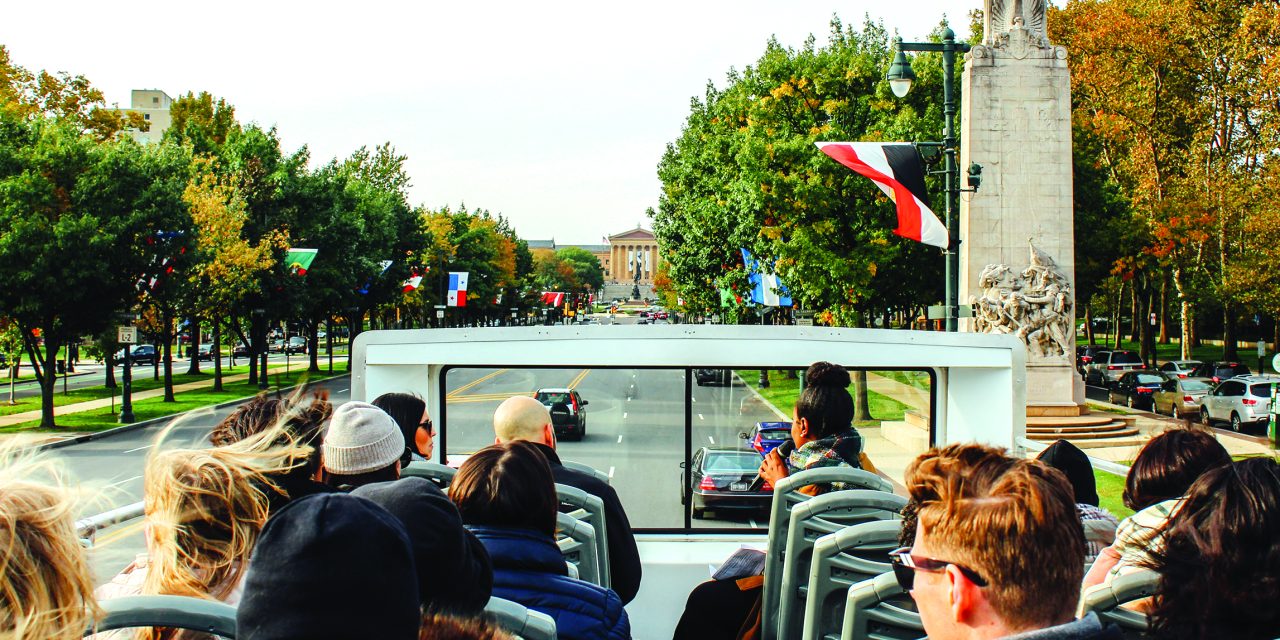
We help you craft a fun and engaging educational student itinerary packed with exciting learning in real-time settings outside the classroom
As an educator or trip organizer, educational field trip planning can be a rewarding experience if you have a clear roadmap and tips for creating an engaging itinerary. It’s crucial to design field trip itineraries that not only offer fun activities but also provide intellectual stimulation and opportunities for experiential learning. This approach fosters a deeper understanding and retention of knowledge among students.
Discover more amazing resources for student travel planners and educators when you Subscribe for FREE to Student Travel Planning Guide today.
By strategically planning your field trips, you can create a balance between educational value and exciting adventures. This approach ensures that students not only enjoy the trip but also gain maximum educational value, turning field trips into immersive and memorable learning experiences.
Here is a guide on how to craft student itineraries for field trips that are not only entertaining but truly enriching, intellectually stimulating and unforgettable.
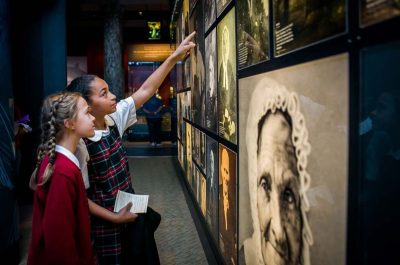
Connect Student Field Trip Activities to the Curriculum
One of the most impactful strategies to boost the educational value of a school field trip is to integrate the itinerary with your classroom curriculum. By planning your field trip in conjunction with your curriculum, you ensure that the trips content directly complements what students are studying, making their learning experience more comprehensive and meaningful.
Planning your curriculum and educational field trips together allows you to seek out destinations, landmarks, museums, parks, and experiences that directly relate to and expand upon what students are learning in the classroom. Not only are you saving yourself time by planning both together, but your curriculum can also provide a crystal-clear map for topical and sensical field trip planning.
For example, a history class studying the American Revolution will get far more educational value out of a trip to Boston steeped in significant historical sites versus a more generic itinerary that visits a history museum, which provides little experiential components.
Example itinerary for student groups:
Day 1: Start at the Boston Massacre site for an immersive historical reenactment. Then, visit the Old South Meeting House, the staging ground for protests like the Boston Tea Party. End the day at the Boston Tea Party Ships & Museum, where you can participate in interactive multimedia experiences.
Day 2: Walk the famous Freedom Trail, passing sites like the Paul Revere House, Old North Church and Bunker Hill Monument. Tour Harvard University’s historic colonial-era buildings. Have lunch in America’s oldest public park, Boston Common.
Day 3: Travel to Lexington & Concord’s Minute Man National Historical Park, witnessing the hallowed grounds where the first Revolutionary War battles occurred. Tour the Hancock-Clarke House where Hancock and Adams took refuge. Conclude at Emerson’s house and Old Manse, two historic Concord sites intertwined with the Revolutionary era.
By carefully curating a field trip itinerary that directly aligns with their curriculum, students can experience history in a tangible way. This reinforces their classroom learning and creates lasting memories that will solidify their understanding of this pivotal era in American history.
Integrate Reflective Learning for Students
Students absorb and retain more information through experiences, and reflection is a key component of experiential learning. Consider building time into the itinerary for students to reflect on what they’re seeing, doing, and learning while on the trip, while the information and experiences are still fresh.
This could take the form of journaling prompts, small group discussions, or a creative activity like drawing or photography accompanied by student impressions. Encouraging students to actively process their experiences in real-time with an activity will help them solidify what they’ve learned and integrate it into their classwork later.
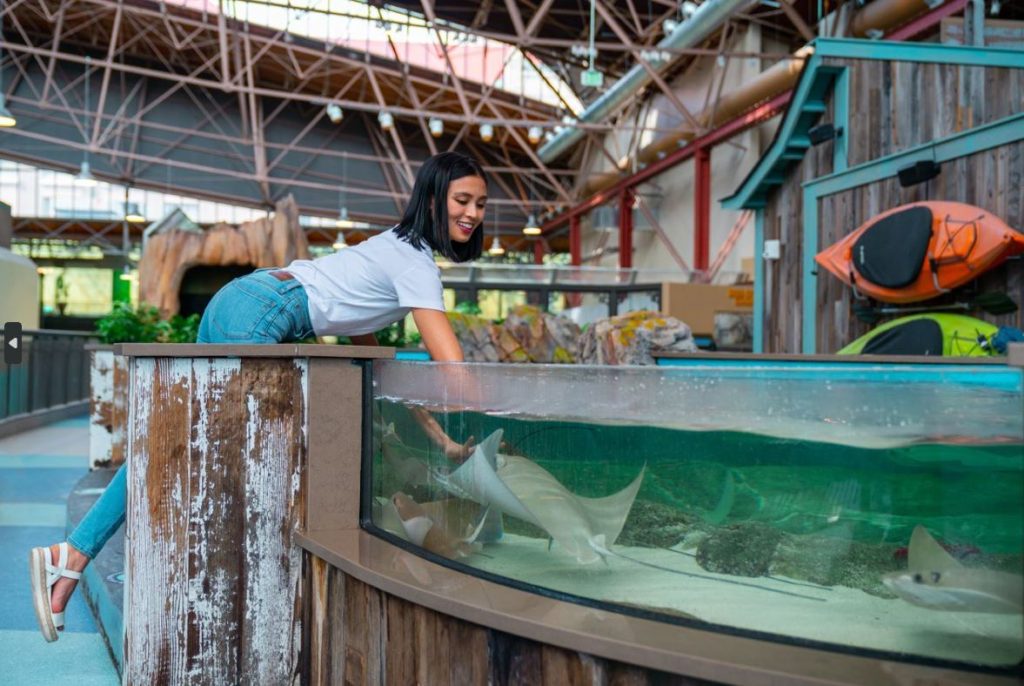
Include Cultural Immersion on an Educational Field Trip
Travel offers students incredible opportunities to experience different cultures firsthand. Whenever possible, consider including authentic cultural activities or interactions with the local community on your itinerary.
This could be a hosted meal at a local family restaurant, a neighborhood walking tour led by residents, or a school visit to meet and engage with local students. Cultural immersion fosters greater global understanding and social skills in all facets of a student’s life.
Perhaps there are cultural landmarks or museums showcasing artifacts related to the area and its people past and present. Many places of cultural significance have regional museums that provide guided tours and lectures for classes, providing an enriching experience for students while supplementing their classroom education.
Plan Hands-On Workshops for Students
Lectures and tours certainly have their place on class field trips, but students learn best by doing and engaging their left and right brains at the same time. Look for interactive workshops and classes relevant to the trip’s educational themes.
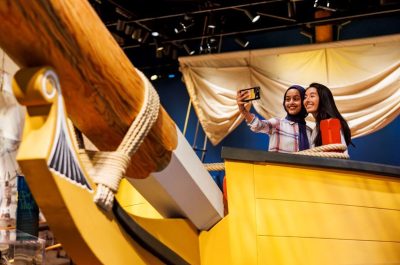
- For a marine biology-focused itinerary, check if the local aquarium offers a dissection lab for high school groups.
- Culinary arts students will gain much from a hands-on cooking class in regional cuisine for grades 8-12.
- At Plimoth Patuxet Museums in Massachusetts, students can partake in Wampanoag Workshops, learning traditional skills like hide tanning, pottery, and gardening directly from Native educators. They offer workshops for pre-k to college students .
- The National World War II Museum in New Orleans features many STEM workshops and student programs for multiple grades. They also provide Field Trip Plus for an immersive 45-minute, museum educator-led interaction for student groups grades 3-12.
- At the Museum of Science in Boston, students can participate in hands-on engineering workshops where they design, build, and test prototypes like wind turbines, ensuring an immersive STEM learning experience.
- George Washington’s Mount Vernon estate offers an interactive Colonial Classroom program, allowing students to step into the roles of students from the 18th century, practicing penmanship with quill pens and exploring early American curriculum.
The more hands-on the experience, the more impactful and memorable the learning is for your students. These are just some examples of the myriad workshops available for student groups on field trips.
Tap Local Experts for Student Groups
Enlisting local experts as speakers, guides or facilitators can elevate an itinerary’s educational quality. Reach out to university scholars, scientists, artisans, and community leaders at your destination who can share their niche expertise with students. A great place to start is your destination’s local visitors bureau.
Some examples might include:
- A geologist’s guided hike that will illuminate more than just the typical sights.
- An oceanographer could do a hands-on workshop at the lab or on the beach where children can interact with wildlife and ask questions.
- An archaeologist may organize a mock dig site and bring artifacts for students to examine while teaching excavation and preservation techniques.
- A meteorologist might conduct an interactive workshop on weather and atmospheric science.
Leave Room for Student-Led Discovery
While it’s good to have a thorough student itinerary, be sure to also give children some freedom to follow their own curiosity. Unscheduled time to explore a museum, gallery or neighborhood lets students delve into what interests them most.
Having a choice in their own learning path boosts engagement and takeaways. If a child or group of children show a keen interest in sharks while at the aquarium, have a parent or teacher stay with them for some extra time at the shark exhibit to ask questions and interact with the sharks along with the staff.
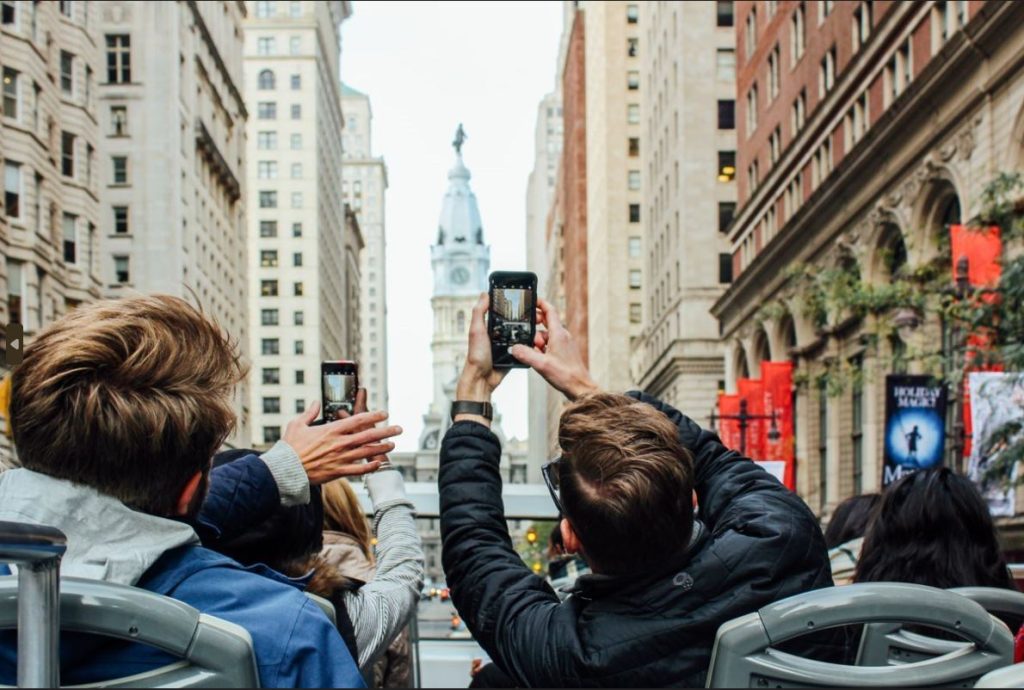
Choose Suppliers with an Educational Ethos
The vendors and suppliers you select can greatly influence a student itinerary’s educational value. Seek out accommodations, restaurants, tour providers and activity partners that share your learning objectives. Many vendors and suppliers offer educational programs or content designed specifically for student groups. Ask about customized classes or tours aligned with your curriculum.
With a learning-centric approach to student itinerary design, class trips become more than just a fun getaway—they’re a meaningful extension of the classroom. Educational travel helps students develop critical thinking, cultural sensitivity, a broadened worldview and curiosity that will serve them well at school and beyond for years to come.
Did you enjoy this content? For more tips on crafting impactful student itineraries, Subscribe for FREE to our Student Travel Planning Guide today.
By Ashley Dale, Contributing Writer and Homeschooler
Header photo: Big Bus Tour courtesy of PHLCVB/K. Huff

RECENT STUDENT TRAVEL PLANNING GUIDE ARTICLES

- Go School Trip - Make Better Tomorrow

- Search for:
- Vietnam School Trips
- Cambodia School Trips
- Laos School Trips
- Myanmar School Trips
- Thailand School Trips
- Indonesia School Trips
- Japan School Trips
- Singapore School Trips
- China School Trips
School Trip Blog
The reasons why educational field trips are important for students.
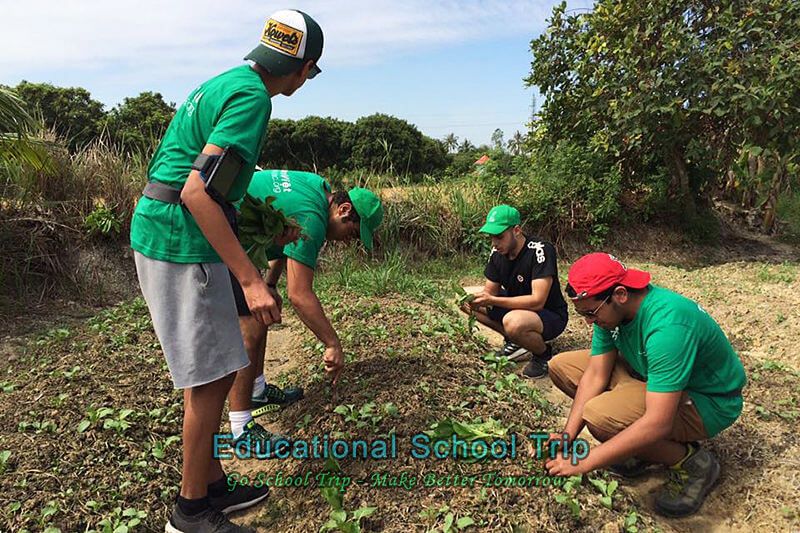
Educational Field Trip plays a vital role in the school curriculum, which serves a wide range of benefits in several ways including learning and teaching. One of them is that they help students to learn through authentic experience and can be an interesting way to explore new things for both the learners and teachers. This is the reason why students should encourage to engage in field trips which are significant for students. In terms of educational, students have ample opportunity to witness new things, learn about new environments at their own pace and immerse themselves in an authentic experience, without having to the anxiety of homework, exams or tests. Most importantly, field trips contribute greatly to build self-confidence and foster a sense of teamwork and community. It is highly recommended for you to add educational school trips part of traveling, you definitely get abundantly memorable experience and deep knowledge of various aspects in life.
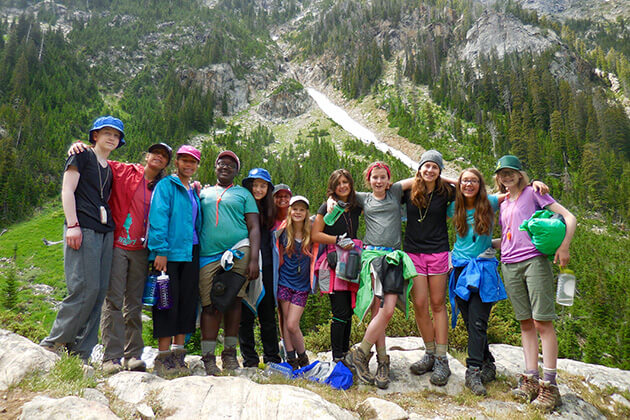
The Importance of Field Trip in Teaching
Educational Field Trips can associate with a variety of benefits for teachers and students. In terms of teaching, it would be better for the teacher to take part in field trips mostly because of its advantages. It is true that the trips provide teachers with ample opportunity to develop personality and professionalism. Obviously, it is necessary for teachers to get in touch with innovative practices and the latest teaching methods to apply these ways into the curriculum at school. Educational field trips help teachers widen their horizons of knowledge and broadening the scope of their syllabus. Most educational trips pay much attention to outdoor activities with a wide range of aspects in life. It means the trips allow the teacher to connect the classroom with real-life and authentic experience. Therefore, it is considered a fantastic way to improve their lessons and catch up with innovative teaching which is more practical and meaningful. Most importantly, the teacher is a guide to inspire and stimulate students to understand the world that exists beyond the school curriculums. To be more precise, students will be encouraged to learn not only knowledge but also soft skills, life skills, communication skills and more.
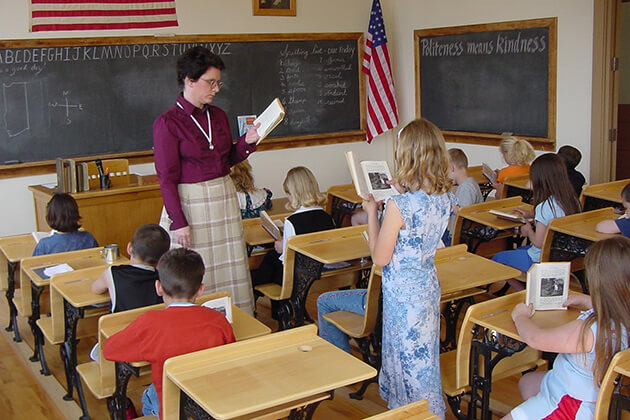
The Importance of Educational Field Trip in Learning
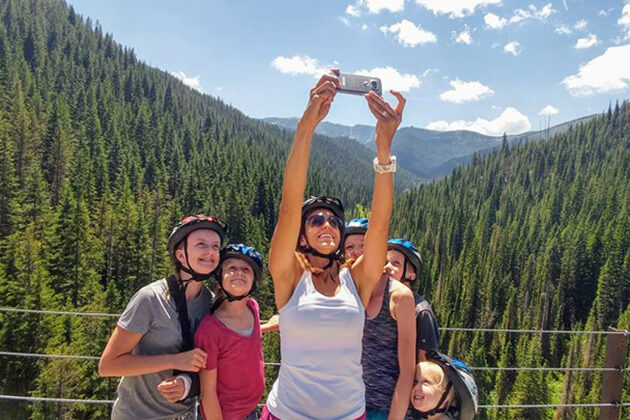
The Importance of Field Trip in Student Life
It would not be completed your trips if you forgot to set up an educational field trip in your student life. It is time for you to learn new things and get a deeper understanding of life. Having an educational trip in the early part of the term is so wise since it will allow students to bond with classmates they may not know very well. Getting away from school a day is always exciting for students and gives students an opportunity to spend time with each other in a new environment. Most of the educational tours organized with groups so it is beneficial for students to develop a sense of community. They can chat, observe and learn about each other.
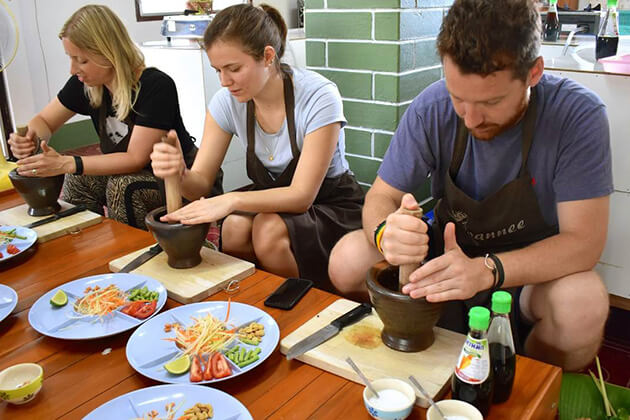
The Important of Educational Tour
It is true that there are various benefits to take from educational excursions. Though the primary purpose of educational tours is to educate students, they are also used as part of the curriculum to cover a wide range of life skills including teamwork, time management, communication, etc. This is because educational travel allows students to dip in fresh experiences, and use them to enhance their career prospects. If you are setting up an educational tour, you should spend the time to research useful information and prepare the necessary things for this. For example, you should pay much attention to the means of transportation, the budget, the number of students, etc. The importance of educational tours for students can be better in various ways. First of all, this tour provides ample opportunity to exchange and learn many skills with each other. On educational field trips, students feel the sense of enjoyment which offers them to acquire a fresh perspective, learn new things and witness different sides of the country. This opens up endless possibilities to understand the world. Going on educational tours means to have a major educational element including giving students the chance to build closer bonds with their classmates, experience a new environment and enjoy a day away from the classroom.
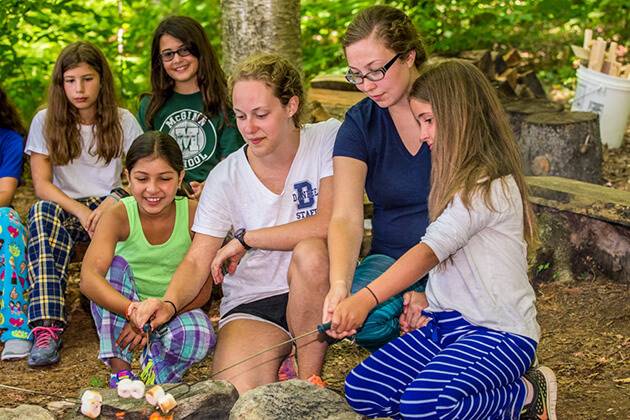
Username or email address *
Password *
Remember me Log in
Lost your password?
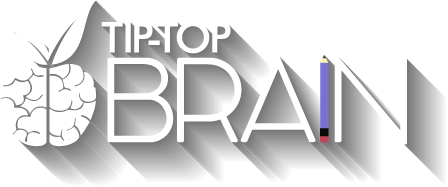
- About Tip-Top Brain
- Back To School
- Middle School
- Our Programs
- Special Education
- Testing & Test Prep
- Virtual Learning
- Personalized Tutoring
- Private Tutoring
- Homework Help
- Essay Writing Help
- March 9, 2022
- Childhood Education News
The 4 Big Benefits of Field Trips for Kids
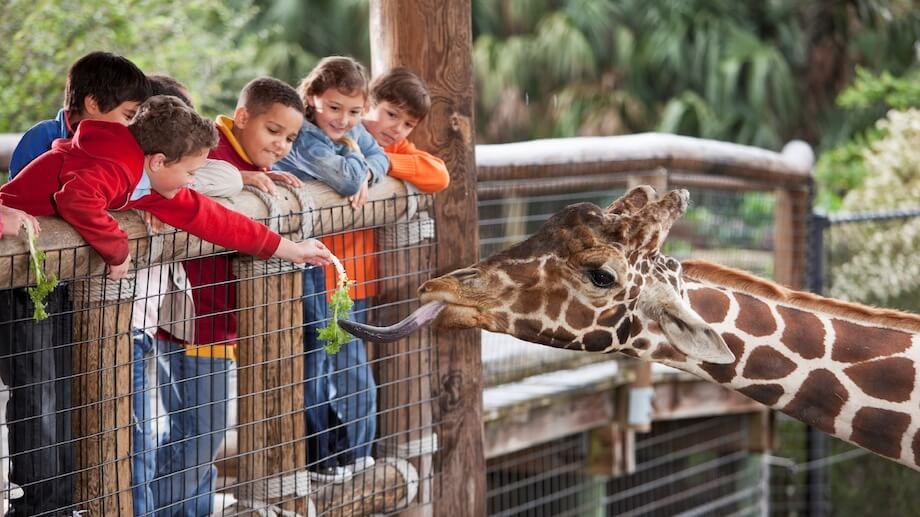
Share This Post
When thinking back to my childhood days, there is nothing more vivid than my memories of school field trips. Field trips ranging from museums, zoos, animal farms, and the pumpkin patch all come to mind. Many of us have had the privilege of experiencing the benefits of field trips firsthand. We must understand that field trips are amazing tools to extend the classroom to the real world. As educators and parents, we can take advantage of the benefits of field trips to more effectively promote real-world learning, social-emotional development, and academic success. The benefits of field trips in early and childhood education can be tremendous!
1. Field Trips and Real-World Learning
Children are active learners as they are constantly making connections with the world around them. With an innate drive to learn and explore, field trips are the perfect way for children to learn outside of a typical classroom setting.
Before a trip, prepare your students for the unique environment. Allow students to prepare themselves by informing them of where they will be going, what they will do, the things they will see, proper clothing, and appropriate behavior. If “there will be live animals, discuss the importance of soft touch if handling is allowed. If they will be taking a hike through a hilly or wet location, talk about fear of heights or getting their feet wet.” To promote real-world learning be sure to make connections to the curriculum. It is important to emphasize the purpose and intent of the field trip. This way students will be prepared, excited, and hungry to learn more!
2. Benefits of Field Trips Include Social-Emotional Development
While the push for academics in early and childhood education has created a decline in field trips, we must understand that field trips play a massive role in social-emotional development. Field trips allow students to collaborate with their peers, explore new environments, make connections, problem solve, develop trust, and empathy. Unfortunately, we have seen field trips being used as a positive reinforcement for good behavior instead of being used as a tool to enhance social-emotional development.
3. Field Trips Boost Academic Success
Field trips are both fun and memorable ways to promote academic success. One study indicates that “regardless of gender, ethnicity or socioeconomic status, youth who take educational trips have better grades because the trips made them more engaged, intellectually curious.” With culturally enriching field trips, students can make connections to other educational fields, gain first-hand experiences, and understand concepts on a deeper level.
Students benefit as they participate in unique experiences that build on their learning. Most importantly, field trips pique the interest of young-learners, a key factor in childrens’ motivation to learn, inspiring students to engage with concepts in ways that are relevant and meaningful. Field trips reinforce topics and ideas learned in the classroom. To further promote academic success, educators can provide both pre-trip and follow-up instruction!
4. Virtual Field Trips Boost Learning Too
Virtual field trips are terrific ways to implement interactive technology in your child’s life! Virtual field trips can range from an online experience to the zoo, aquarium, animal farm, pumpkin patch, rainforests, etc.! Virtual field trips are viable options for many as they can be more accessible for families and educators! For more accessible options, consider walking around your neighborhood, visiting local shops, or even going to your neighborhood park. Virtual field trips are amazing as they allow children to explore with technology in ways that are interactive!
Awesome Field Trips for Kids
- The Drawing Center
- Brooklyn Childrens Museum
- Environmental Study Center
- New York Aquarium
- American Museum of Natural History
- Childrens Museum of the Arts
- New York Hall of Science
- Queens County Farm Museum
- Queens Botanical Garden
- Virtual Field Trips
All in all, the benefits of field trips are undoubtedly tremendous as they promote real-world learning, social-emotional development, and academic success. We must continue to support our educators and advocate for meaningful experiences. Our children deserve opportunities to explore and make meaning outside of the classroom too. Do not forget to document your amazing field trips to look back on!
Join Our Community
Subscribe to Our Blog for the Latest Updates and Insights!
More To Explore

A Fantastic Day at the PS 85 Roaring Expo: Tip-Top Brain’s Fun-Filled Adventure!

How to Find a High School Internship (That Are A Perfect Fit!)

The Bill Set to Shrink NYC Class Sizes

2 Best Practices to Create a Loving Environment for Kids
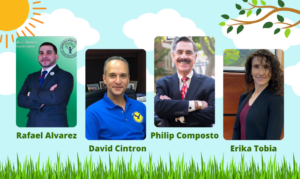
Meet the D30 Superintendent Candidates
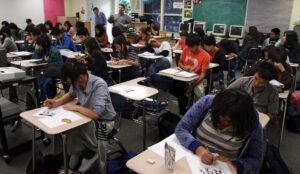
NYC Class Sizes 101: The Great Debate
(718) 440-3541
2171 Steinway St. Astoria, NY
Tip-Top Brain empowers students to unlock their potential through quality education, positive learning environment, and dedicated instructors.
Useful Links
Blogs & articles.

Our Newsletter
Subscribe to our newsletter to stay informed and receive valuable parenting tips.
- Terms & Conditions
Please complete this form and our program coordinator will reach out to you shortly.
We're committed to your privacy. Tip-Top Brain uses the information you provide to us to contact you about our relevant content and services. You may unsubscribe from these communications at any time.
The Future (And Benefits) Of Virtual Field Trips In Education
by Skill Prepare | Sep 25, 2023 | Blog

In the evolving landscape of education, virtual field trips are emerging as a powerful tool for enhancing learning and engagement. They break down geographical barriers, allowing students to explore the world beyond their classrooms. This article delves into the impact of virtual field trips in education, examining their benefits, challenges, and potential for future learning.
Breaking Down Geographical Barriers
Virtual field trips shatter the confines of geography, granting students access to diverse cultures, environments, and historical contexts. Students in a small town can explore the bustling streets of a foreign city, walk through historical landmarks, or dive into the depths of the ocean, all without leaving their classroom. This global exposure not only enriches their learning experience but also fosters global awareness and cultural sensitivity.
The Role of Virtual Reality in Virtual Field Trips
Virtual Reality (VR) stands at the forefront of technological advancements that are revolutionizing the educational landscape. VR’s immersive nature allows students to explore diverse environments, historical sites, and even outer space with a level of realism and engagement that traditional methods cannot match. Let’s delve into how VR is reshaping the concept of virtual field trips and enhancing educational experiences.
Immersive Exploration
With VR, students use a headset and find themselves transported to a different world. Whether it’s the ruins of ancient civilizations, the depths of the ocean, or the surface of Mars. This immersive exploration fosters a deeper connection to the subject matter. This allows students to experience the environment firsthand, leading to enhanced understanding and retention of knowledge.
Real-Time Interaction
VR enables real-time interaction within the virtual environment. Students can manipulate objects, conduct experiments, and explore intricate details that would be impossible to experience in a traditional classroom setting. This interactive element not only makes learning more engaging but also allows for practical, hands-on experience that is crucial for understanding complex concepts.
Access to Inaccessible Locations
One of the most significant advantages of VR in virtual field trips is the ability to explore inaccessible locations. Students can visit hazardous environments, such as active volcanoes or deep-sea ecosystems, without any risk, providing opportunities for learning that were previously unimaginable. This access breaks down barriers to exploration and knowledge, offering equal learning opportunities to students worldwide.
Enhanced Collaboration
VR also facilitates enhanced collaboration among students and educators. Within the virtual environment, students can work together, share insights, and collaborate on projects or explorations, fostering teamwork, communication, and problem-solving skills. Educators can guide the exploration, providing context and information in real-time, ensuring a comprehensive and informative learning experience.
Accessibility and Inclusivity
Virtual field trips ensure that learning is accessible to all students, regardless of physical or financial constraints. Students who may not have the means to participate in traditional field trips due to disabilities or financial limitations can now enjoy the same learning opportunities as their peers. This inclusivity promotes equality in educational experiences, ensuring all students have the chance to explore and learn beyond the classroom.
Real-World Connections
Virtual field trips allow students to make real-world connections to their learning. They can see the practical application of the knowledge they gain in the classroom. This can help in enhancing their understanding and making the learning more relevant. For instance, a lesson on marine biology comes to life when students can virtually explore coral reefs and marine ecosystems.
Challenges and Considerations
Despite their numerous benefits, virtual field trips are not without challenges. Ensuring all students have access to the necessary technology is a significant concern. Additionally, educators must be adept at navigating and utilizing virtual platforms to facilitate these trips effectively.

The Future of Virtual Field Trips
Looking ahead, the future of virtual field trips in education is bright and filled with endless possibilities. As technology continues to advance at an unprecedented rate, these educational experiences will become more immersive, interactive, and accessible to students and educators worldwide. Virtual Reality (VR) and Augmented Reality (AR) technology will play a significant role in enhancing the virtual field trip experience. They will offer more interactive and realistic explorations that we thought weren’t possible before.
Virtual Field Trips In The Next Few Years
In the coming years, we can anticipate a seamless integration of advanced technologies that will allow students to explore the world. They will be able to interact with the environment, and even potentially communicate with experts or guides in the field remotely. This level of interaction will provide students with a richer, more engaging learning experience. Allowing them to absorb and retain information more effectively.
Providing A Personalized Learning Experience
Moreover, the future of virtual field trips holds the promise of personalized learning experiences. With the help of AI and machine learning, virtual field trips can be tailored to meet the unique needs and interests of each student, ensuring that the learning experience is relevant and engaging for everyone. This personalization will enable students to explore their passions and interests in depth, fostering a love for learning and exploration.
In essence, the future of virtual field trips in education is not just about exploring the world from the comfort of the classroom. It’s about creating equitable, engaging, and personalized learning experiences that inspire curiosity, exploration, and a deep love for learning among students of all ages and backgrounds. The integration of advanced technologies like VR, AR, AI, and machine learning will revolutionize virtual field trips. This can make them a fundamental component of modern education and a key tool for global learning and exploration.
In conclusion, virtual field trips stand as a revolutionary tool in education, offering diverse and inclusive learning experiences. They break down geographical barriers, enhance engagement and learning, and provide real-world context to classroom knowledge. While challenges exist, the continued advancement of technology promises a future where virtual field trips are an integral part of the educational journey, enriching learning and broadening horizons for students worldwide.


Our Virtual Field Trips:
Are aligned with your curriculum, motivate your students with technology, add time to your day, support all your learners, include quizzes and learning activities, can increase student outcomes, are budget-friendly, shape your students into global citizens.

Curriculum Alignment
Our video content is aligned with social studies, life science, and geography curriculum standards. Look up our curriculum alignments here.
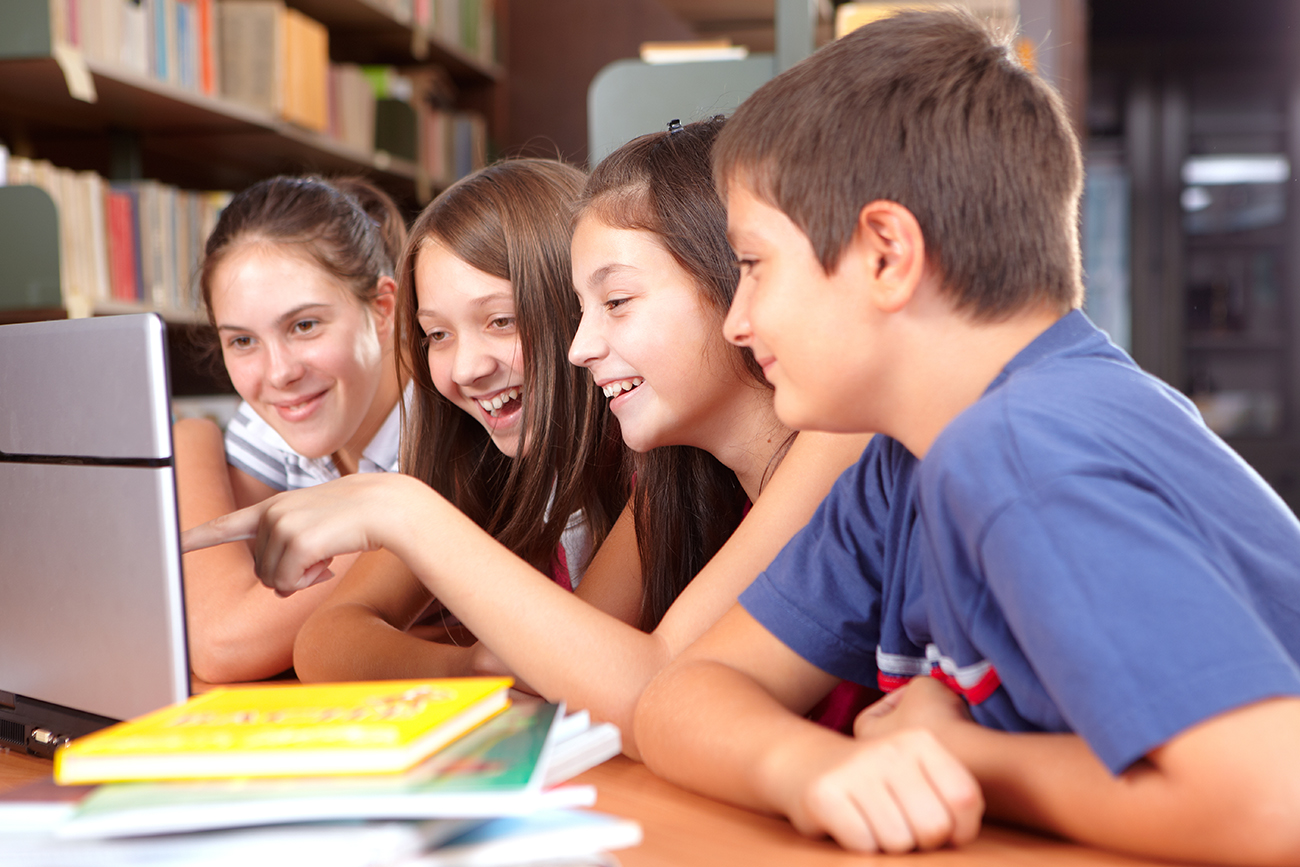
Add Time To Your Day
Our videos are a time-saver for you because they are written to align with curriculum standards. You can rely on our videos to help you meet your classroom goals.

Quizzes and Activities
Students can quiz themselves online, or you can download quizzes and learning activities.

Budget-Friendly
You have unlimited access to our videos and learning resources. You won’t find another classroom resource that provides you with so much, yet costs so little. We’ve made sure of it!

Motivate with Technology
Teachers everywhere see the magic that happens when they bring technology into the classroom. All you need is an internet connection, and the magic can by yours!
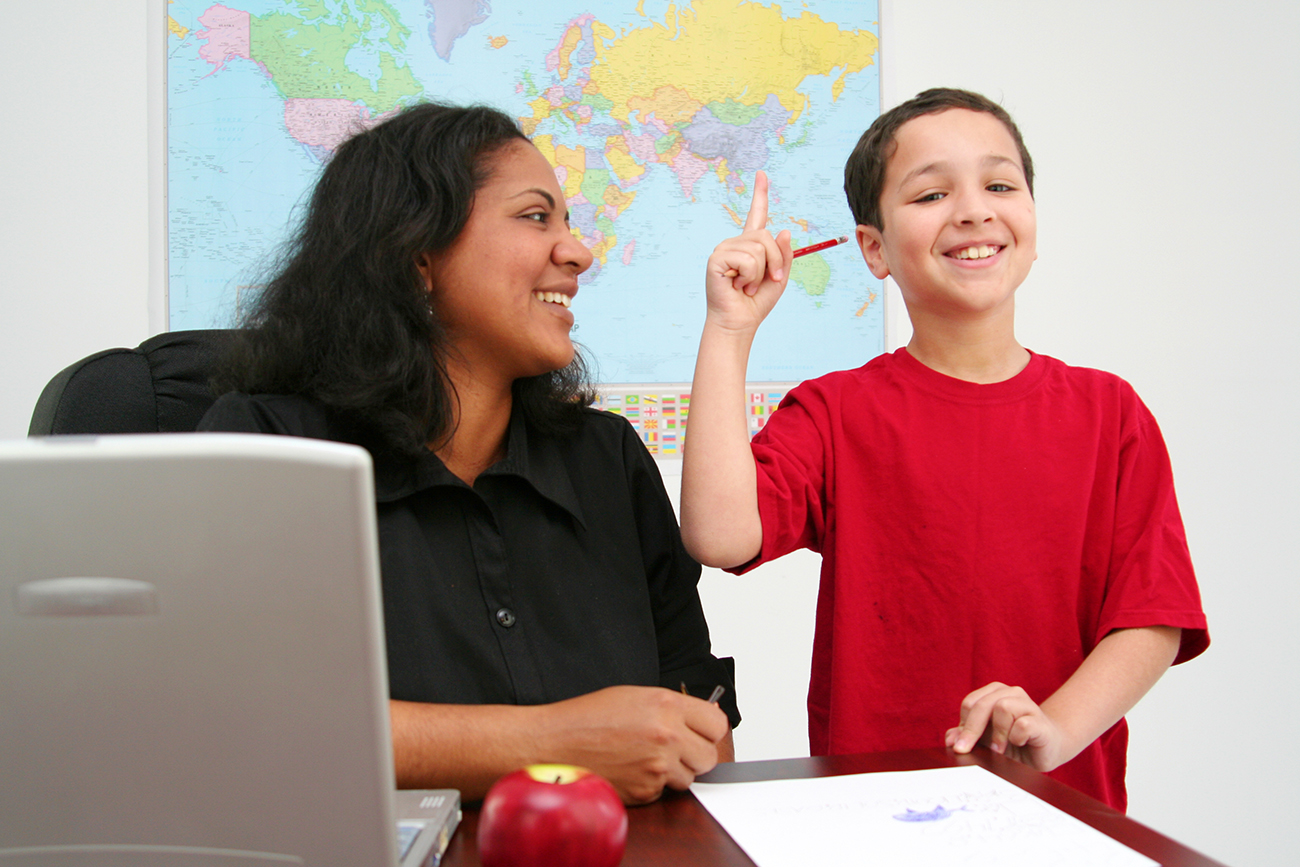
Increase Learning Outcomes
Videos provide an additional path to learning and are one of the most effective means of creating knowledge for some students. Also, our videos can be watched as many times as needed. Learning outcomes can be expected to increase for many students.

Support All Your Learners
You know that your students learn differently. Our videos help you reach all your students more quickly. Visual learners, students with dyslexia, and ESL students are great examples of children who can benefit from our videos.

Create Global Citizens
Help your students learn about the world around them. Our videos bring the sights and sounds of distance places right into the classroom and create experiences they may not otherwise ever have.

Easy Use of Technology
Technology is making its way into the classroom at a faster and faster rate. For students, it can’t happen fast enough. All you need is an internet connection!

Extreme Habitats
Our virtual field trips take students to extreme habitats that would otherwise be too risky or else impossible to visit. Rainforest jungles, coral reefs, and the Galapagos Islands are good examples. They are also the most popular videos on our website.

21st Century Learning Tools
Today’s students are 21st century learners. This means we need to make technology a part of their education. It also means they need to learn about the world around them. You can do both with our videos!

No Restrictions
Our virtual field trips let students go anywhere at anytime. Research says that virtual trips can provide the same learning benefits that an actual trip does. Taken together, this means that our virtual field trips can be a successful way to teach students about the world around them – any day, any time!
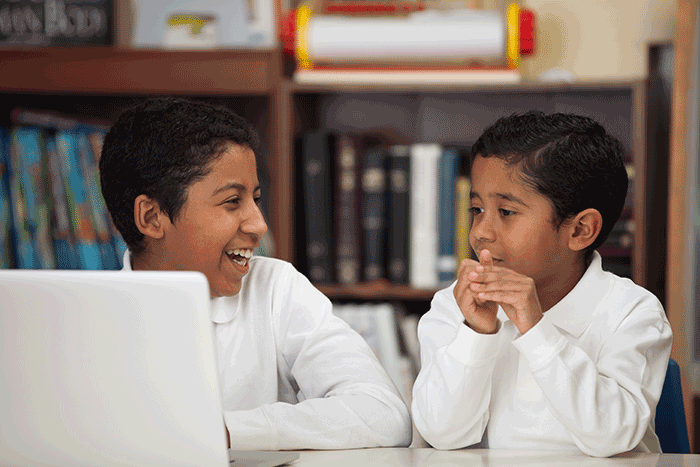
Best Practices for E-Learning
We are trained in e-learning principles and use best practices in our video design.

Independent Learning
Students can watch and learn on their own, or as part of a group.

Special Needs
Certain groups of students can’t easily participate in field trips. Our virtual field trips make sure that no students are ever excluded and all can take part.
Where would you like to go next?

IMAGES
VIDEO
COMMENTS
Field trips aren't a threat to in-class instruction, Erickson notes, they're a tool to help bolster engagement and expand students' horizons. "It's possible to expose students to a broader world and have a culturally enriching curriculum without sacrificing academic outcomes, and it may actually improve academic outcomes," Erickson says.
The 10 Benefits of School Field Trips. Students do better in school. Students learn more social skills. Students can visit new places. Students can become critical thinkers. Students learn by experiencing, not just by studying "theory". Students learn more time management skills. Students get to learn by doing. Students learn more teamwork ...
The Educational Value of Field Trips. Taking students to an art museum improves critical thinking skills, and more. Jay P. Greene joined EdNext Editor-in-chief Marty West to discuss the benefits of field trips, including how seeing live theater is a more enriching experience to students, on the EdNext podcast.
Here's why field trips are important. The study found that regardless of gender, ethnicity or socioeconomic status, children who take school trips have better grades (59%), higher graduation rates from high school (95%) and college (63%) and greater income (12% higher annually). In fact, 89% said educational trips had a positive, lasting ...
Examining the Educational Benefits of Field Trips. Field trips offer a number of educational benefits that cannot be replicated in a classroom setting. By participating in field trips, students gain hands-on experience, introduce new ideas and perspectives, and enhance their learning through exploration. Gaining Hands-on Experience. One of the ...
Field trips are a popular and well-established method of education. Even the oldest college in the world offers them in one form or another. One of the advantages of field trips is these offer students the opportunity to learn about a subject in a more hands-on and immersive way than they can in the classroom.. However, field trips also have some potential drawbacks.
Experiential learning is authentic, first-hand, sensory-based learning. Experiential activities explore, touch, listen to, watch, move things, dissemble and reassemble. Learning consists of grasping an experience and then transforming it into an application or result (Kolb, 1983).
The Essence of Educational Visits. Educational visits, also known as field trips, offer students a hands-on experience that goes beyond the confines of the classroom. These visits provide students with the opportunity to explore and interact with different environments, cultures, and ideas. By stepping outside their comfort zones, students ...
Students who fully engage their senses are more likely to retain what they've learned on the field trip — a win for everyone. Take Notes and Pictures: Have students take notes or pictures during the trip. These activities can help students stay focused and will serve as useful references when discussing the experience back in the classroom.
Research has demonstrated that field trips can be designed to more effectively support student learning. Field trips work best when they provide support for students to explore in a personally meaningful way. Learning in field trips is impacted by many factors (DeWitt & Storksdieck, 2008). The structure of the field trip impacts learning.
Different Learning Modalities. Information is presented to students in a way that meets different learning modalities. Field trips provide students with the ability to learn by doing instead of just passively listening to the information being taught in class. Students are exposed to new experiences that, hopefully, broaden their horizons.
Museums, and many other kinds of field trips are multi-media experiences; therefore, learning is enriched and reinforced with superimposing sensory and intellectual inputs. Most museums are designed to stimulate curiosity and actively engage the visitor, so you have a very professional partner working with you to help your students learn.
Let us tell you why field trips should be given due importance and how it contributes to a well-rounded education. Interactive learning. It is so much easier to understand what a cow is when you see it in front of you and are able to touch it as opposed to reading about a cow in a book. Field trips ascribe to the former thought process.
Real World Learning. As teachers, a field trip is one of the best tools that we can use to provide every student with real-world experiences. Whether that's a trip to the local grocery store, waterfront park, a library, a museum, a theater, a community garden or a restaurant, each experience that a student participates in contributes to their understanding of the world.
Field trips offer numerous benefits to students, educators, and the overall learning process. Some of the key advantages of incorporating field trips into the curriculum include: Enhanced Learning: Field trips provide students with hands-on experiences that complement classroom instruction and deepen their understanding of academic concepts.
Checkout the 8 benefits of field trips. 1. Enhanced Learning Experience. Outdoor settings provide a dynamic backdrop for learning. Whether it's studying the ecology of a forest or the history etched in a monument, being physically present in the environment enriches understanding.
To ensure field trips effectively complement classroom instruction, teachers can offer pre-trip instruction and activities, as well as design follow up instruction and assignments that use the information students received on the trip. The educational value of field trips can also be found in the less-conventional learning methods that trips ...
Example itinerary for student groups: Day 1: Start at the Boston Massacre site for an immersive historical reenactment. Then, visit the Old South Meeting House, the staging ground for protests like the Boston Tea Party. End the day at the Boston Tea Party Ships & Museum, where you can participate in interactive multimedia experiences.
The benefits of educational field trips contribute greatly to career development and social skills development later in life. The Important of Educational Tour. It is true that there are various benefits to take from educational excursions. Though the primary purpose of educational tours is to educate students, they are also used as part of the ...
Field trips allow students to collaborate with their peers, explore new environments, make connections, problem solve, develop trust, and empathy. Unfortunately, we have seen field trips being used as a positive reinforcement for good behavior instead of being used as a tool to enhance social-emotional development. 3.
9 steps to planning a successful school field trip. 1. Commit to early planning. The earlier you begin planning, the less stressed you'll be if and when obstacles arise. There are a lot of details to iron out, such as. Researching and selecting a destination.
In conclusion, virtual field trips stand as a revolutionary tool in education, offering diverse and inclusive learning experiences. They break down geographical barriers, enhance engagement and learning, and provide real-world context to classroom knowledge. While challenges exist, the continued advancement of technology promises a future where ...
In this article, we'll explore the many reasons why virtual field trips can be such a wonderful educational tool: Virtual field trips can enhance students' learning. Virtual field trips can keep students more engaged. Virtual field trips are more accessible for many classrooms and kinds of learners. Virtual field trips allow for ...
No Restrictions. Our virtual field trips let students go anywhere at anytime. Research says that virtual trips can provide the same learning benefits that an actual trip does. Taken together, this means that our virtual field trips can be a successful way to teach students about the world around them - any day, any time!